

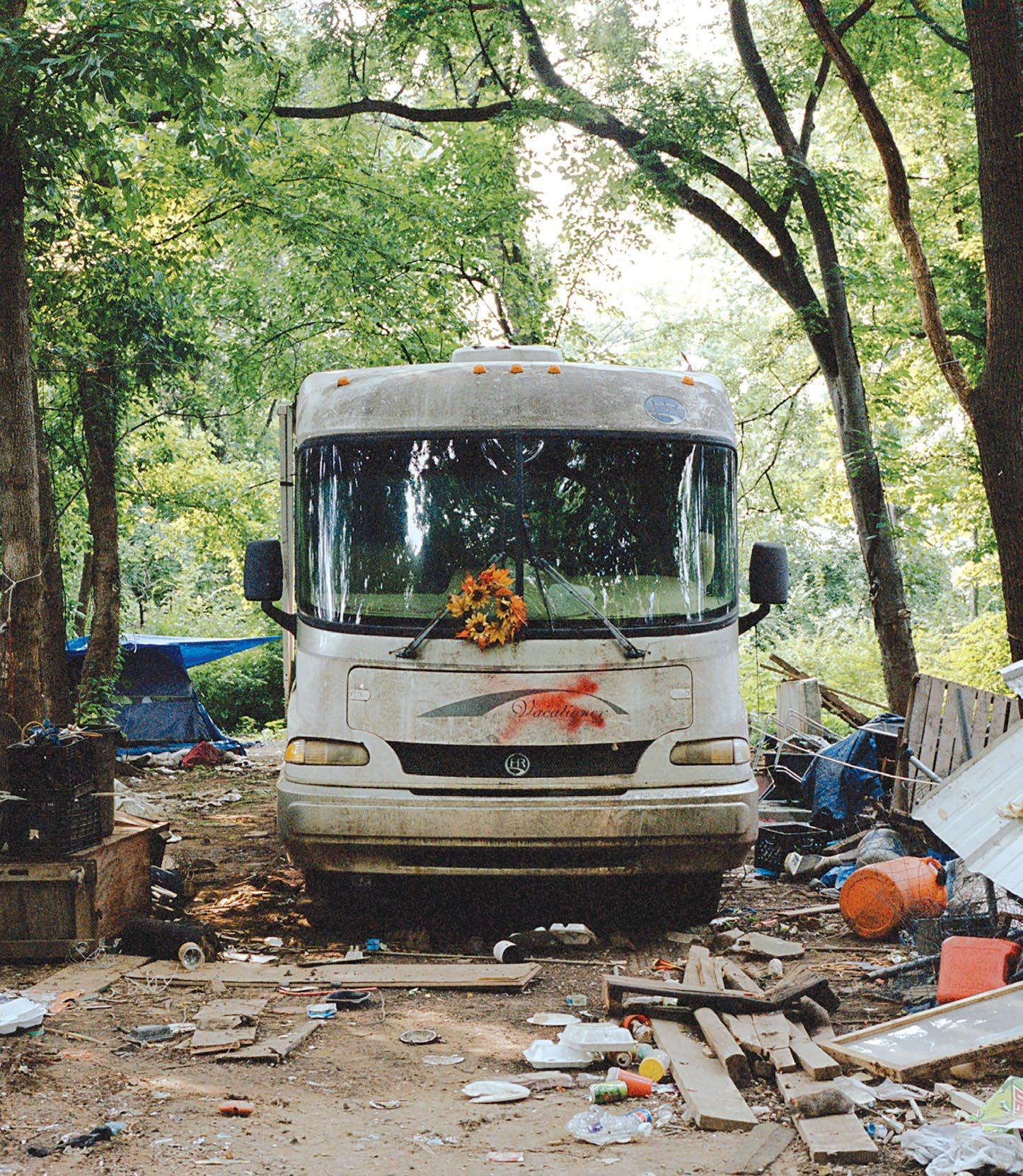

Contributor Board






Contributor Board





Amber DuVentre, Chair • Christine Doeg, Secretary Cathy Jennings, Demetria Kalodimos, O. Wade Nelson, Robin Kimbrough-Hayes, Jim Shulman, Drew Morris, Kerry Graham, Jenny Charles, Devin Graham, Yuri Cunza
Contributors This Issue
Maurice B., Bill Carey, Mccollonough Ceili, Andreos Chunaco, Yuri Cunza, Chris Scott F., Jessica Fincher, FreForever, FreePressGma, William H., y Claire Hennigan, Lindsey Krinks, Lashika, Mark Lemley, Tasha A. French Lemley, M.E. Martin, Mr. Mysterio, Joe Nolan, Howard P., Jim P., Kennetha Patterson, Elizabeth Phillips, Shorty R., Wendell Segroves, Lee Steenhuis, Judith Tackett, Lora V., Jeffrey W.
Contributor Volunteers
Ann Bourland, Andrew Kuluk, Andy Shapiro, Deborah Narrigan, Jamie Dore, Logan Ebel, Loren Montoya, Marissa Young, Matthew Murrow, Michael Reilly, Susan Richter, Tyler Samuel


Stability Guide
Laura Birdsall Copy Editor



Venmo has canceled our account, but you can still pay using Square! You must identify your vendor so we know where to send the payment. Here's how:
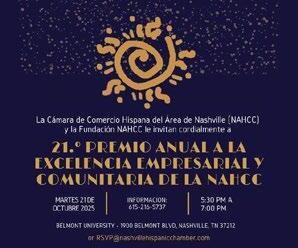
Use your phone camera and scan the code on this page or on the top left corner of the cover of this paper. This will take you to the landing page: thecontributor.org/pay.
Type in the amount you wish to pay. The paper costs $2. Tips are welcomed. Vendors get paid by the next business day.
name and four-digit badge number in the “Required” field. This allows us to know which vendor to pay. Please
for one newspaper in consideration of the Square processing fee.


Since The Contributor started in 2007, more than 3,200 different vendors have purchased $2.3 million worth of The Contributor and sold over six million copies, generating over $15 million in income for themselves.
In 2019, our C.O.V.E.R. Program (Creating Opportunity for Vendor Employment, Engagement, and Resources) was the natural expansion of our mission of removing obstacles to housing. We now offer full case management, assistance with housing and rental expenses, addiction recovery, health insurance, food benefits, and SSI/SSDI
Holly Bowman Director of Development
Jesse Call Operations Consultant
Sarah Champion Housing Stability Guide
Ree Cheers Director of Program Operations
Will Connelly
Executive Director
Cathy Jennings Director of Finance
Andrew Krinks
Editor Emeritus
Caroline Lindner Vendor Program Manager
Lindsey Longoria Housing Stability Guide
Zero Mannino Housing Stability Guide
Raven Nye Director of Quality and Training
Jay Smelley
Administrative Coordinator
Andrew Terry IV
Program Operations Team Lead
Carli Tharp Housing Stability Guide
Barbara Womack
Advertising Manager
Will Connelly, Tasha F. Lemley, Steven Samra, and Tom Wills
Contributor Co-Founders
Editorials and features in The Contributor are the perspectives of the authors. Submissions of news, opinion, fiction, art and poetry are welcomed. The Contributor reserves the right to edit any submissions. The Contributor cannot and will not endorse any political candidate. Submissions may be emailed to: editorial@thecontributor.org
Requests to volunteer, donate, or purchase subscriptions can be emailed to: info@thecontributor.org
Please email advertising requests to: advertising@thecontributor.org
The Contributor P.O. Box 332023, Nashville, TN 37203 Vendor Office: 615.829.6829





Rico X has worked with young people throughout his career and recently was named the chief mission delivery officer of the Girl Scouts of Middle Tennessee.
From 2013 to 2023, he worked at the YMCA of Middle Tennessee, where he managed all of the before- and after-school and school-based programming in the region.
“I worked in the youth development space in some capacity for nearly 25 years,” X said. “So being with the Girl Scouts is familiar territory for me.”
X returned to his roots of youth development work after a brief stunt in re-entry work, which got him closer connected to the homelessness and housing sectors. A couple of years ago, he joined the Homelessness Planning Council (HPC), a community board that oversees the collaborative work of community stakeholders that come together to address homelessness in Davidson County. And this summer, his peers elected him to serve as the HPC chair.
What does a Chief Mission Delivery Officer do?
It’s a fancy title for being a running point on the programming of the Girl Scouts of Middle Tennessee. There are three primary areas where I have oversight:
• First is what we call the girl experience. It’s our year-round programming; it’s our camps; we have a teen leadership council, etc. So, it’s all programmatic elements of the Girl Scouts.
• Another huge component is our recruitment effort, the work that we do with our schools, as well as the work that we do to recruit volunteer and troop leaders. [This includes] the level of support that we give them in the day-to-day work that they do. Without our volunteers, we really couldn’t do what we do. So, that’s a huge component.
• And the third major bucket of what I manage is the product programs. Essentially the product program is our Fall Product and of course our Cookie Program.
We operate in 39 counties, and we serve nearly 11,000 girls. I’m a little over two months into it now, and it’s been an incredible ride thus far. Obviously, I’m still getting myself up to speed, but it’s very meaningful work. The ways in which we are creating meaningful experiences for our young ladies and giving them a chance to learn and grow and explore, it’s been a really good fit for me.
On your LinkedIn profile you describe yourself as an “Organizational Leader, Collaborator, Disruptor.” What does it mean to you to be a disruptor?
Interestingly enough, a lot of times when someone sees the moniker “disruptor,” a lot of people look at that as a negative thing. But in essence, a disruptor is someone that can go into a situation and provide some out-ofthe-box thinking. Sometimes structures and systems need to be disrupted in a positive way. For me, the disruptor [manifests] in spaces that I go into and ask, “How can I be a part of shifting thinking or shifting systems that
BY JUDITH TACKETT
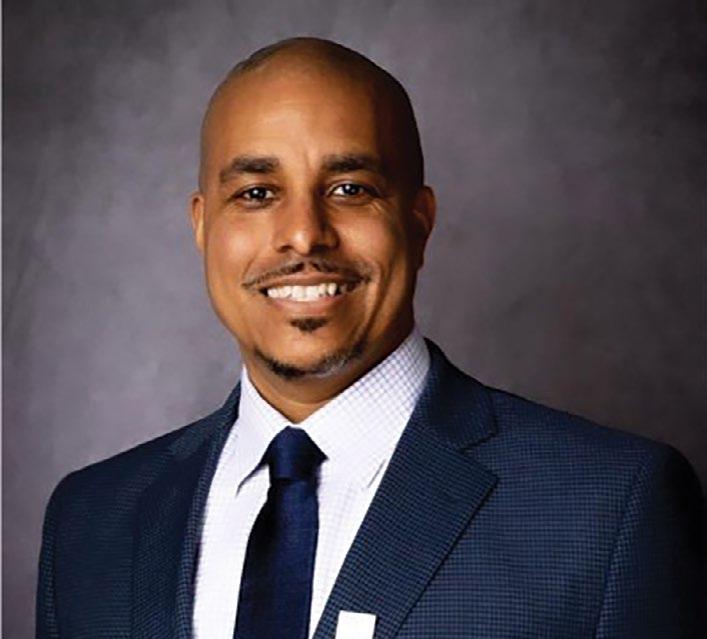
creates a stronger outcome?” Sometimes I’m successful with that. Sometimes I’m not. But that’s the role of being a disruptor. It is to figure out how you, as an individual and through work with others, can be a force that positively changes or alters a system or a structure or a program for the better.
With DEI programs being shut down everywhere. What is your advice to organizations who fight inequity?
It’s challenging and during uncertain times — for leaders in particular — it is okay to lead with vulnerability. That’s a quality that a lot of people think is a weakness, but in essence, I think that people feel more compelled and drawn to [leaders that show vulnerability].
On a broader level, this period is really going to force people to think about how they can move forward in more collaborative ways. Every organization has their own superpower or their thing. And [when] we can find additional ways in which we complement one another programmatically or organizationally, that’s important.
Specifically to the question of DEI, a lot of the conversations that I’ve had with people in this space, there is definitely a resolve that, “ Hey, you know, for the purposes of securing my funding, I may have to change the nomenclature or change the wording of how we do certain things, but I’m still going to figure out how to do the work.” Some people may view that as a cop out, but at the end of the day, if it’s changing some language but still doing the work, I think a lot of people are opting that direction because the work is still so very important. We just have to be creative.
So when you think about [it], even in our school system, they’re still doing a lot of great things. They’ve just changed the name of the program so that it doesn’t necessarily implicate DEI, but ultimately the spirit of the work is still being done in creative ways.
With funding cuts looming for nonprofits
— whether through the sunset of American Rescue Plan Act (ARPA) dollars or through federal and state policy changes — what is your advice for nonprofit leaders who are facing loss of funding?
Every organization, my hope is that they are having proactive conversations. Now is definitely the time to be proactive and to really make some determinations on what sustainability looks like. Unfortunately there are a lot of organizations that have to make tough decisions.
My advice from a leadership perspective is that in making those tough decisions, just giving yourself grace. If that means that you have to cut some positions, but you still have to figure out how to keep the mission moving forward, then that’s just what we have to do. I mean the reality is that you can’t have a mission without a budget.
Organizations [will need to] think creatively and proactively in terms of sustainability, contingency planning, that sort of thing. I saw something a few months ago where I think nonprofits in Nashville are set to lose about $1.5 billion. When you think about the implications of the federal cuts that are happening, I mean, that’s a huge gap, and it’s inevitably forcing people to think internally about what sustainability looks like. But then also, what are some ways in which we can partner and work together better? Ultimately, the latter in terms of different partnerships that’s going to be the only way in which we are able to weather this particular storm. [It is about] finding ways in which we can pull our resources together.
You have been selected as the new chair of the Homelessness Planning Council (HPC). In the current climate where federal funding is unclear, what is your vision in this leadership position? What would you like to achieve here at the local level?
I want to do a broader convening that is specific to the funding landscape. I want to
bring together organizational leaders that either directly or indirectly touch some element of the issue of homelessness. And really just have a broader facilitated conversation about A) the ways in which we can collaborate better, and B) really thinking about or doing some foundational work on what some contingency plans look like.
There’s a proposal to cut HUD funding [significantly]. So what does that look like? I want to have a broader convening, or even a series of convenings, that allow us to have those broader conversations. I do think that it’s going to be very important as part of those conversations to lean in a little bit more with the business community, to lean in a little bit more intentionally with the philanthropic community, to lean in a little bit more with our faith-based community and make those intentional connections. There are so many churches, for instance, that do work on their own but may not necessarily be fully plugged into the ecosystem of this work or looking at it in the broader context.
So, one of the things that I’m keyed in on right now is leveraging the HPC as a convener of broader organizations that are doing this work and making sure that we’re having the very intentional conversations on what sustainability looks like and really pushing the business community and the philanthropic community to walk alongside of us in meaningful ways.
There is definitely room for improvement when it comes to the ways in which we do the work with the government funded aspect, whether it be with the federal [funding] that flows through Metro, but quite frankly, there’s been too much emphasis and too much ire that’s been placed on the work that is being funded from a governmental aspect. It’s an important component, but it’s not the only component.
For me, we’re really going to have to lean in harder with these other entities that are part of our community. The business community is very much a part of this equation. When you think about workforce development and job opportunities, that’s a component of homelessness. How can we close some of those gaps? And certainly when we talk about the philanthropic community, they’re being hit from all different angles because it’s not just homelessness funding that is being cut. It’s across the board.
All that to say that a key element of what I want to do is to make sure that we’re having very open, transparent, and intentional conversations on what sustainability looks like. I mean we are 10 months into this administration and we’re seeing all these cuts. So, we can either continue business as usual, or we’ve got to drill down and be very intentional about contingency plans because I think that it is very clear that the issue of homelessness is something that is becoming increasingly criminalized. It is something that is definitely very much on the chopping block when it comes to funding priorities. So we’ve got to move accordingly and find alternative ways in which we can still get the work done, even if it means that there is reduced funding. So that’s very heavy on my mind these days.
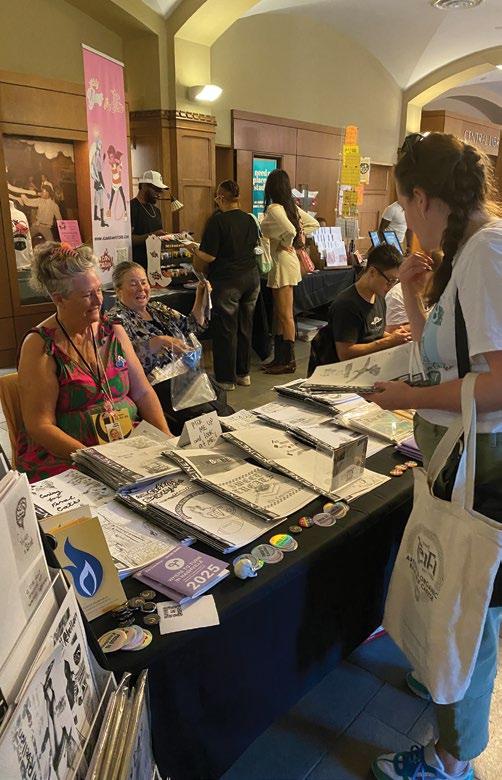
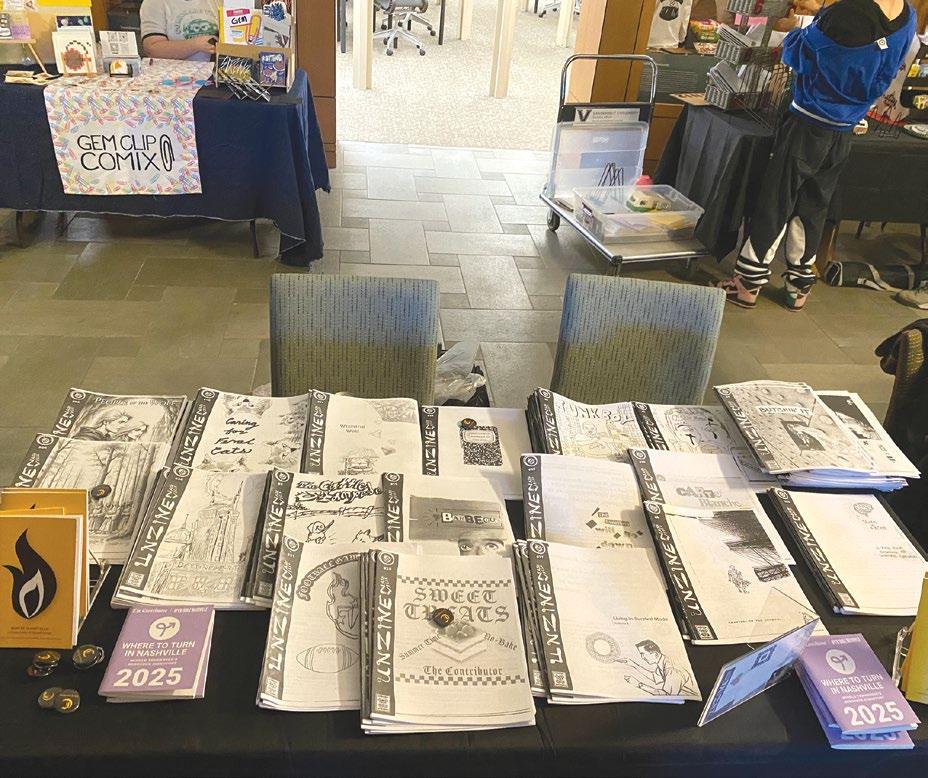
Seven Contributor vendors and UnZine Nashville creators, attended the Vanderbilt Comicon thanks to our fearless leader, Will Connelly.
The Vanderbilt Jean and Alexander Heard Library has a classic ivy league feel to it. It is several stories high, with lots of lovely interior and very classic library type space. We were in the outer hall and we were there with 100 other Comicon participants.
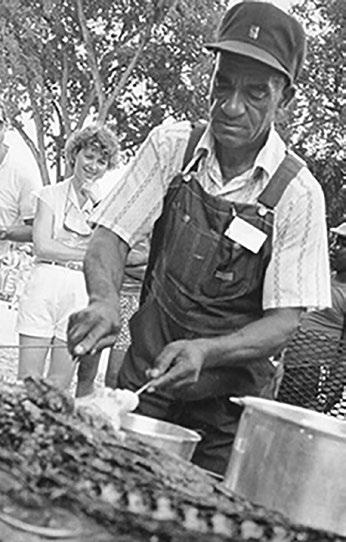
BY FREEPRESSGMA, CONTRIBUTOR VENDOR
Each of us who chose to attend the conference had a great opportunity to network with other comics artists and the general public. People were very interested in our zines.
The creative output from Contributor vendors with UnZine Nashville has been enormous. We had a goal of producing 12 zines this year. We are currently at 40 zines and it is not the end of the year yet!
It turns out that Vanderbilt is a great host!
They had a snack room full of tables groaning with snacks and drinks, the Vanderbilt Student Club was there with giveaways, and lots of volunteers went around and made sure everyone had what they needed.
I was able to proudly introduce my threepart series, “The Paper Doll Rebellion,” in a lovely cellophane packet. Most people wanted the trilogy. I had a couple of other individual scenes such as “Lessons from Lilith,” “Butchin’
It,” and “Carbatross,” which also sold quite well. We shared laughter. We shared sales strategies. We spent seven hours together. It was a long slog!
Also, the UnZine coordinator and fellow artist, Melissa Willis, was a great support to us and very enthusiastic. We appreciate her. So come on by to our next event at The Arcade (unit number 56 upstairs) from November 8 through December 31.
BY WILLIAM H., CONTRIBUTOR VENDOR
This is my grandpa, Bill Howard, barbecuing up in Washington D.C. for the Smithsonian Institute’s American Folklife Festival in 1986. They invited him to represent West Tennessee cooking because of his reputation throughout Chester County, TN as, “The Barbecue King.”
At first he didn’t want to attend the festival, but our family got together and convinced him to go. He just didn’t care about being honored. He was a simple person. He didn’t care about money. But my family convinced him and his wife to go and they had a good ’ol time.
Bill was a God-fearing man. He was very respectful, very stern, same as my grandmother. My grandparents ran a successful BBQ place on their property where they also raised their own hogs and a large family. My grandpa taught me how to BBQ and I would work with him cooking and raising the hogs. My grandmother
made the best pies in the world. Everything was from scratch. Her chess pie melts in your mouth.
We’re part of the history in Chester County. Publicly we were not accepted, but privately we were known. I think that’s wrong. If my grandfather was good enough to go to the Smithsonian institute and be honored like that, he should be honored the same way as the white folk in the county.
In 2021, Henderson and Chester County issued a joint proclamation that September 25 was Bill Howard Day. The county and his family remembered Bill on the 43rd annual Chester County BBQ festival, a festival started by Bill himself that still runs to this day.
It’s an honor to be a part of the Howard family. Thank you God for allowing me to be born into a crazy family.
BY LORA V., CONTRIBUTOR VENDOR
It’s that time of year. Time for Allergies. Nothing you can do about it. It’s in the air, trees, grass. Just go outside and enjoy yourself as usual. Have fun. As soon as you et back in the house take a shower. Change clothes so no pollen or allergens get on the furniture or on your bed. If you have allergies, it makes you start sneezing, They make over the counter medicine for it. But, if it starts making you swell up in your face, etc. go make a doctor appointment. Let the doctor check you out. You might have to get a shot. This will go away. All it takes is a change of season.
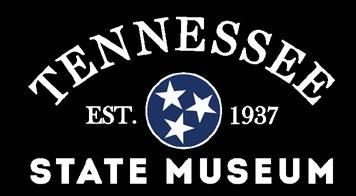


Written by Chris Scott Fieselman, Vendor #0015
“A True Son of Encouragement,” Is a man who understands? It’s not a foolish investment, To have faith in your fellow man. Who would have thought?
A garden would grow, In a dry and dusty land. So much can be achieved, If you only believe it can.
Now, so many saw the good man Stephen fall, And the man responsible. The epitome of evil, out to get them all. But so much changed and was never the same, When he heard the master’s call.
Barnabas held out his hand, When everybody ran from the man named Paul.
Barnabas saw potential... Barnabas in all of us... Look at how old and worn out it is, Used up and even starting to rust. Years of neglect may have had its affect.
But it’s not a total loss.
When you see the possibilities, Through the Eyes of Barnabas.
Now, Antioch was a spot on the map, Many centuries ago. A godless city that wasn’t pretty, Much like so many we know. You’d never expect that Paul and Barnabas, Would have any affect at all. But it was there and then, That the name “Christian,” Became the name that they were called.
Barnabas saw potential... Barnabas in all of us... Look at how old and worn out it is, Used up and even starting to rust. Years of neglect may have had its affect. But it’s not a total loss. When you see the possibilities, Through the Eyes of Barnabas.
Now, so many say just throw it away, Don’t bother me now and please not today. But I’ll bet they regret that they never knew, That homeless old man, Was really Howard Hughes.
Barnabas saw potential... Barnabas in all of us... Look at how old and worn out it is, Used up and even starting to rust. Years of neglect may have had its affect.
But it’s not a total loss.
When you see the possibilities, Through the Eyes of Barnabas.
Written by Chris Scott Fieselman, Vendor #0015
Well, I know where you’ve been, And where you’re coming from. The trouble that you were in, And the things that you have done.
But I don’t hold it against you.
You know that, “I Love You” - Still. My Love will keep on Shining Through, And you know it always will.
Speak...
Tenderly...
To My Love...
Tell her what I’m thinking. Tell her what I’m thinking of.
Speak...
Tenderly...
To My Love...
Tell her I know, What she’s been through, And she’s been through enough. And Speak Tenderly to my Love.
Now, I know sometimes you fail, And don’t see things my way.
But I also know, That you’re very frail, And easily led astray. But I’ll be there beside you, If ever you should call. My Love will be there to guide you. I’ll pick you up if you should fall. I’ll help you through it all.
Well, I’ll be there tomorrow, Like I’ve been there today. I feel your pain and sorrow, When things don’t go your way. But through the good, And the bad times, Just keep your eyes on me. And in the end, Someday you’ll find, I’ll bring you home you’ll see.
Speak...
Tenderly...
To My Love...
Tell her what I’m thinking. Tell her what I’m thinking of.
Speak...
Tenderly...
To My Love...
Tell her I know.
What she’s been through, And she’s been through enough. And Speak Tenderly To My Love.

ACROSS
1. Awestruck
5. Paid player 8. Precedes pedia 12. Oxen connector 13. Sonic sound 14. ____ Dondarrion, “Game of Thrones” Lord of Blackhaven 15. Bibliographical abbr. (2 words) 16. *2025 Pete Davidson horror flick, “The ____” 17. Wear away 18. *Movie director of “Knock at the Cabin” fame 20. Manage without help 21. Subway coin 22. Boar’s mate 23. *Jordan Peele’s directorial debut (2017, 2 words) 26. Richard Gere in 1980 movie, pl. 30. Bit of binary code 31. A way to steal gas 34. *”It’s ____” (1974) 35. Estrogen producer 37. Have a bug 38. Glue on, e.g. 39. Comme çi, comme ça 40. Nice to look at 42. Opposite of WSW 43. Opposite of #40 Across 45. Cordwood units
47. The night before 48. Warm down-slope wind
50. Blood component 52. *Trip to Sweden gone wrong (2019)
56. Like certain radiant energy
57. Pakistani tongue
58. “Ill at ____”
59. Not together
60. Ooze
61. Bulgarian, e.g.
62. Like certain grape
beverage
63. Get it wrong
64. Shakira’s don’t lie?
DOWN
1. Roll call answers
2. Visi____ or Ostro____
3. Thumbs-up
4. Italian frozen dessert
5. Southern England’s coastal town
6. *____ Polanski, director of “Rosemary’s Baby”
7. *The story of Damien
Thorn, with The (1976)
8. *Americans’ attacker in London (1981)
9. Pump it!
10. Pirate Captain ____
11. Frozen H2O
13. Devotional worship, in Hinduism
14. Haze over 19. Timid
22. Envy, biblically-speaking
23. Duck follower
24. Diplomat on a mission
25. Badger or bug
26. Happy Gilmore’s game
27. Forever prisoner
28. Sheep-like
29. Movie “Battle of the ____”
32. Pay as you earn, acr.
33. Step on it
36. *Mia Farrow in Roman Polanski’s movie (1967)
38. Poetic although
40. Before of yore
41. Depletes (2 words)
44. Manifest
46. Catch in a net
48. Firearm shooter
49. More eccentric
50. Shoshonean people
51. Panache
52. Dante’s Beatrice, e.g.
53. Mauritania’s Eastern neighbor
54. Hurry up, acronym
55. RPMs
56. *James Wan’s directorial debut (2004)

The ghost of murdered Clarence Pullis may have haunted his alleged killer Lem Motlow, but it didn’t stop Motlow from building a career in Tennessee spirits and politics
One of the most powerful men in Tennessee was indicted for murder a more than a hundred years ago.
Lem Motlow, then the owner of the Jack Daniel’s Distillery, was accused of murdering Clarence Pullis, a porter on the Louisville and Nashville Railroad, on March 17, 1924.
Motlow had boarded an eastbound train heading from St. Louis to Nashville that night. He had been drinking before he boarded the train, although how much he drank was a matter of dispute in his subsequent trial.
Shortly after Motlow boarded, a Black railroad porter named Ed Wallis told him to present his ticket. Motlow objected, using a racial epithet commonly used in that era, according to his defense attorneys in the subsequent trial. Motlow and Wallis then had a physical altercation (again, the nature of which was also a matter of dispute in the trial).
Pullis, who was white, tried to separate Motlow and Wallis. Motlow pulled a loaded handgun from his pocket and fired, intending to kill Wallis, but accidentally killing Pullis.
Motlow was accused of first-degree murder. He hired a team of the best lawyers he could find, which included (among others) Frank P. Bond and Seth Walker of Nashville. Motlow’s trial took place in St. Louis in early December. The courtroom was packed and included (among others) Tennessee Governor Austin Peay of Tennessee and former Tennessee Governor Malcom Patterson of Tennessee. Both Peay and Patterson served as character witnesses for the Tennessee millionaire. “Lem Motlow’s reputation is excellent, none above it,” said Peay.
BY BILL CAREY
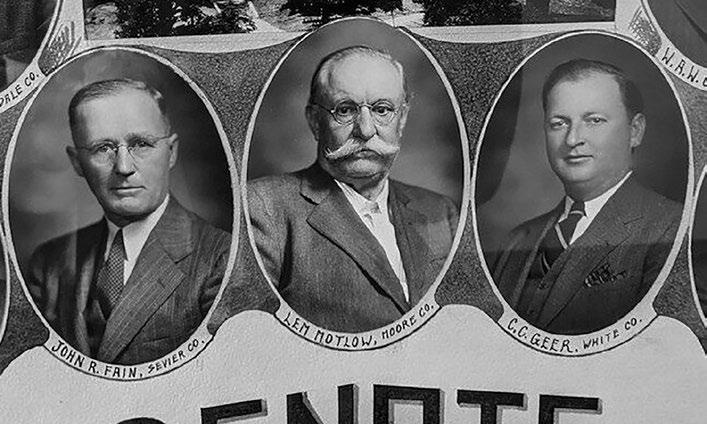
In 1924, the Ku Klux Klan was at the height of its power, and racial segregation was required all over the South. Motlow’s legal team tried to convince the all-white jury that he had fired in self-defense after being attacked by Wallis, and that Pullis was the unfortunate victim of a misfire. Using a strategy and language that wouldn’t be allowed in a courtroom today, attorney Bond painted a picture of Wallis as an insolent troublemaker.
“There are two classes of negroes,” Bond told the jury, according to the December 11, 1924, St. Louis Post Dispatch. “One class regrets that it cannot share social equality and social privileges with the white race ... To him social privileges means that white folks attend upon him. He is pert and offensive in his manner.”
There was an eyewitness to the shooting who claimed that Wallis did not attack Motlow. The character of that eyewitness,
New Policy Forum Gathers 400 Cross-Industry Leaders
Nonpartisan think tank ThinkTennessee hosted a policy forum Sept. 30 called Driving Tennessee’s Prosperity, which brought together 400 policymakers, business executives, nonprofit leaders, mayors and community stakeholders from across the state at the Music City Center in Nashville. The event focused on four of the state’s most pressing policy challenges: housing, transportation, child care and workforce development. “[This] Policy Forum was about more than panels and speeches — it was about providing a space where Tennesseans can come together across sectors and political divides to shape a stronger future,” said Erin Hafkenschiel, president of ThinkTennessee. “We convened this gathering because attainable housing, high-quality, accessible child care, affordable transportation options and effective workforce development programs are challenges too big for any one community to solve alone. By bringing leaders from across the state to the
same table, we’ve taken an important step toward building shared solutions that give every Tennessee family the opportunity to thrive. This forum is not the finish line — it’s the starting point for ongoing collaboration, innovation, and action.” Attendees participated in panels, plenary sessions and conversations focused on building collaborative, evidence-based policy solutions to Tennessee’s most pressing long-term challenges. At the event, former Governors Phil Bredesen and Bill Haslam shared the stage for a plenary on “Making Politics Work for Tennesseans.” Both leaders “reaffirmed their belief that Tennessee’s long-term prosperity depends on unity over division — through cross-sector collaboration, strategic investment, and leadership rooted in data and results,” according to a release from ThinkTennessee. TNECD Commissioner Stuart McWhorter, Ralph Schulz, former president and CEO of the Nashville Area Chamber of Commerce and other local leaders Bill Dunavant III (Dunavant Enterprises), Dr. Keith Gray (UT Medical Center),
Joseph Broida of St. Louis, was disparaged by Motlow’s attorneys. In fact, they referred to Broida as a “Russian Jew.”
The jury found Motlow not guilty — a verdict that was greeted with praise in the South and heavily criticized in the North. “The ghost of Pullis will haunt him [Motlow] for the rest of his days,” said the Belleville [Illinois] News Democrat.
Did it haunt him? Not as much as might have appeared at the time. The ghost of Clarence Pullis didn’t stop Motlow from continuing to operate the Jack Daniels Distillery in Lynchburg, which he owned until his death in 1947.
The ghost of Clarence Pullis didn’t stop Motlow from being elected to the Tennessee House of Representatives in 1932 and the Senate six years later.
The ghost of Clarence Pullis hasn’t hurt the success of the Jack Daniels Distillery, which has been owned by the Brown-Fore -
Matt Kisber (Silicon Ranch), and Janelle Reilly (CHI Memorial Health System) explored opportunities and risks on the horizon for the state’s economy, including the importance of aligned workforce development for Tennessee jobs, community wellbeing and infrastructure to better connect Tennessee’s urban and rural economies. STAFF REPORTS
A Photo Exhibition Debuting Nashville’s Photographers for Social Justice
A new photography group Photographers for Social Justice (PfSJ) held it’s first exhibition Oct. 11 at Friends Meeting House. The show, called Witness, “marks the beginning of something Nashville hasn’t had before: an organized group of photographers united by a commitment to social justice,” says a release from the group. “While our city is home to immense talent, there has been no collective dedicated to documenting and confronting injustice through the camera’s lens — until now. The Witness exhibition is not just a showcase of powerful images, but a statement of purpose. The photographs on display confront themes that can’t be ignored: immigration, wage theft, Gaza, ra-
man Company since 1956.
The ghost of Clarence Pullis didn’t stop the Tennessee General Assembly from naming the tunnel that connected Legislative Plaza to the State Capitol after Lem Motlow and his son Reagor in 1959.
Finally, the ghost of Clarence Pullis hasn’t kept the story of his death in the public sphere. The St. Louis Post Dispatch has done several stories over the years looking back at the trial. But I think it is safe to say that few people in Tennessee know about the Motlow trial, and it is certainly not talked about among tour guides in Lynchburg. To this day there is no mention of Lem Motlow’s murder trial on either his Wikipedia page or that of the Jack Daniels Distillery.
However, I do know that, during Motlow’s lifetime, his colleagues were very aware of what happened on the eastbound train that headed east from St. Louis on March 17, 1924. Around 2003, I interviewed Nashville attorney James O. Bass, who had served in the General Assembly at the same time as Lem Motlow. Bass, who was about 90 years old at the time, recalled a debate at the General Assembly where he was asked to speak on behalf of Lem Motlow, because it was an awkward subject for someone with “Motlow’s legal past,” Bass said.
I asked Bass what he meant by that statement, and he told me about what happened on the train in 1924. That was the first time that I’d ever heard of Motlow’s murder trial. So, to some degree, the ghost of Pullis did “haunt” Motlow.
Bill Carey is the executive director of Tennessee History for Kids, a non-profit organization that helps teachers teach Tennessee history and civics (www.tnhistoryforkids.org).
cial and economic injustice, climate crisis, displacement, and the everyday struggles that define our world.” The assemblage of photographers launched to show that the role of photographers is more critical than ever. “PfSJ is launching at a moment when the role of photographers is more critical than ever. In an era of distortion, distraction and disinformation, images serve as testimony, proof, and calls to action. This exhibition is an invitation to the public to witness, engage and reflect — but it is also a challenge to photographers everywhere. If your work avoids discomfort, looks away from struggle, or values aesthetics over truth, it’s time to ask who your images serve. Photography cannot remain neutral in the face of injustice.” The group is calling for other photographers to show responsibility to their craft and the documentation it needs. They are a collective, “dedicated to supporting, connecting, and uplifting photographers who use their craft to confront systems of power and illuminate the fight for justice. [They] are committed to building community, amplifying voices, and ensuring the stories that matter most are seen.” STAFF REPORTS
“The Contributor” está trabajando con uno de los principales periódicos en español La Noticia para llevar contenido a más lectores en Middle Tennessee. Nuestros vendedores de periódicos han pedido durante mucho tiempo que nuestra publicación incluya contenido que apele al interés de residentes de habla hispana en nuestra comunidad.
“The Contributor” is working with one of the leading Spanish-language newspapers La Noticia to bring content to more readers in Middle Tennessee. Our newspaper vendors have long requested that our publication include content that appeals to the interest of Spanish-speaking residents in our community.


El Premio Nobel de la Paz, establecido por el inventor sueco Alfred Nobel en 1895, busca reconocer a quienes han contribuido significativamente a la fraternidad entre las naciones, la reducción de conflictos armados y la promoción de la paz Desde 1901, ha sido otorgado a figuras que han marcado la historia entre ellas Martin Luther King Jr , Malala Yousafzai, Nelson Mandela y Barack Obama , así como a organizaciones como la Cruz Roja o Amnistía Internacional Más que un reconocimiento individual, el Nobel de la Paz se ha convertido en un termómetro moral del mundo Refleja las aspiraciones de la humanidad, pero también sus tensiones políticas y éticas En 2025, ese equilibrio se ha puesto nuevamente a prueba con la decisión del Comité Nobel de otorgar el galardón a la vene z olana María Corina Machado, líder opositora y defensora de los derechos democráticos en su país Una vida de oposición y resistencia Nacida en Caracas en 1967, María Corina Machado es ingeniera industrial y fundadora del movimiento político Vente Venezuela Su trayectoria ha estado marcada por una constante defensa de la democracia frente al autoritarismo del régimen venezolano Fue diputada de la Asamblea Nacional y, a pesar de su destitución e inhabilitación política, continuó promoviendo una transición pacífica hacia el restablecimiento de las instituciones democráticas
En 2023, su liderazgo se consolidó al obtener una victoria contundente en las primarias opositoras Sin embargo,


e l go b i e r n o d e N i c o l á s M a d u r o l a inhabilitó para par ticipar en las elecciones presidenciales de 2024, intensif i c a n d o s u p ap e l c o m o s í m b o l o d e resistencia cívica Aun así, Machado decidió per manecer en Vene zuela, convir tiéndose en un referente moral para quienes luchan por un cambio desde dentro del país
El Comité Nobel Nor ue go destacó su “valentía civil y compromiso con la liber tad”, señalando que su labor re presenta la lucha no violenta por la democracia Al recibir el anuncio, Machado dedicó el premio “al pueblo vene zolano que no se rinde, que sigue creyendo en la liber tad y la justicia”
Entre el reconocimiento y la crítica
El anuncio generó una ola de reacciones encontradas Para muchos, el Nobel a Machado es un mensaje de esperanza para Vene zuela y una muest r a d e ap oyo a l o s m ov i m i e n t o s democráticos de América Latina Sin embargo, también desper tó críticas dentro y fuera de la re gión
Conoce tus derechos:
¿Que hacer en caso de una redada?
Mantenerse callado
Sólo dar nombre y apellido No mentir
Nunca acepte/lleve documentos falsos No revelar su situación migratoria No llevar documentación de otro país
En caso de ser arrestado, mostrar la Tarjeta Miranda sados en la Quinta Enmienda de la Constitución, derechos de guardar silencio y contar con un ogado fueron denominados Derechos Miranda go de la decisión de la Suprema Corte de Justicia Estados Unidos en el caso Miranda vs Arizona, 4 U S 436, de 1966

Machado es una figura abiertamente alineada con Estados Unidos y sectores conservadores del continente Ha mantenido cercanía con la administración del presidente Donald Tr ump, quien apoyó abiertamente a la oposición venezolana Además, su firme respaldo a Israel, incluso en medio de los recientes conflictos en Medio Oriente, ha sido inter pretado por algunos como una posición que contradice el espíritu tradicional del Nobel de la Paz
Sus detractores argumenta n que el galardón tiene un sesgo político y refleja las divisiones ideológicas globales más que una visión universal de la paz En contraste, sus defensores sostienen que el premio reconoce la resistencia pacífica y la defensa de los derechos humanos frente a un régimen autoritario, más allá de cualquier postura geopolítica
U n m e n s a j e p a r a Ve n e z u e l a y
A m é r i c a L a t i n a
El Nobel a Machado no solo reconoce a una líder política, sino también a un pueblo entero que ha enfrentado años de
a j u s t i c i
c
t
c i a l y l a p a r t i c i p a c i ó n c i u d a d a n a T a m b i é n r e s a l t a e l p a p e l d e l a s m u j e r e s e n l a p o l í t i c a y e n l a c o n s t r u c c i ó n d e p a z d e s d e l a r e s i s t e n c i a c iv i l E l m e n s a j e e s c l a r o : l a p a z n o s i g n i f ic a a u s e n c i a d e c o n fl i c t o , s i n o l a p e rs eve r a n c i a e n l a b ú s q u e d a d e j u s t i c i a y d i g n i d a d s i n r e c u r r i r a l a v i o l e n c i a E n e s e s e n t i d o , l a l a b o r d e M a r í a C o r i n a M a c h a d o e n c a r n a e l e s p í r i t u d e l u c h a p o r l o s va l o r e s d e m o c r á t ic o s e n u n e n t o r n o a dve r s o
E l P r e m i o N o b e l d e l a Pa z 2 0 2 5 m a r c a u n c a p í t u l o t r a s c e n d e n t a l e n l a h i s t o r i a r e c i e n t e d e A m é r i c a L a t i n a M a r í a C o r i n a M a c h a d o a d m i r a d a p o r m u c h o s , c r i t i c a d a p o r o t r o s r e p r e s e n t a l a d u a l i d a d d e l o s t i e m p o s m o d e r n o s : l a u n i ó n d e l a f e e n l a l i b e r t a d y l a i n ev i t a bl e c o n t r ove r s i a d e l a p o l í t i c a g l o b a l
Su premio, más que un punto final, es una invitación al diálogo, a la reflexión y al compromiso colectivo con los principios que sostienen toda sociedad justa Y aunque las opiniones puedan dividir se, una verdad per manece: la lucha por la liber tad y la dignidad humana sigue siendo el camino más difícil, pero también el más necesario hacia la verdadera paz
E n ví e n os s u s s u ge re n c i a s p or e - ma i l : ne ws@hispanicpaper com ó 615-582-3757

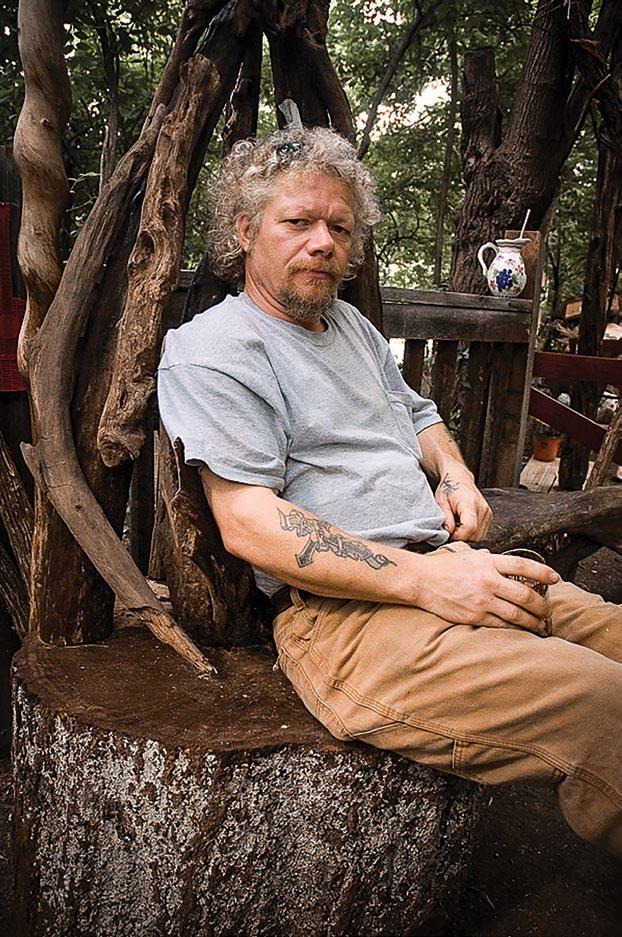

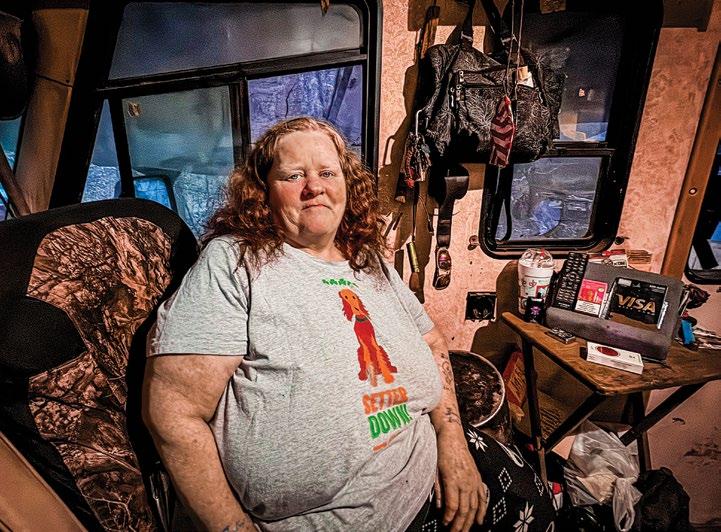
If you were to drive one mile south of downtown and hang a left on Anthes Drive which snakes down to the Cumberland River, you would find over 20 acres of land that are now fenced off and flanked with barbed wire and “no trespassing” signs. Over the past 40 years, thousands of unhoused Nashvillians have called this land home. Before it was closed by city officials in June of 2025, the area was endearingly, and somewhat notoriously, known as Old Tent City.


BY LINDSEY KRINKS
tracks along an old chain-link fence. The scent of campfire smoke hoovered in the air. Goldenrod simmered in the brush, ironweed radiated purple, and a lattice of summer-worn trumpet vines reached toward the Silliman Evans bridge high above our heads. Beneath its shelter and in the surrounding woods stood dozens of tents and impressive shanties, some with porches, wood burning stoves, and make-shift food pantries.
On my first visit to the camp in September of 2008, thick morning fog held around trees, emanating from the riverbank. I walked the well-worn footpath with other outreach workers past the Music City Star
This was the Great Recession. While some residents had lived in the camp for years, others were more recently displaced from natural disasters like Hurricane Katrina or manmade economic disasters like the financial crisis. Still others were displaced from downtown after an anti-panhandling campaign spearheaded by the
Nashville Downtown Partnership.
“We fell on hard times,” I heard from resident after resident, but the reality in the United States, as anthropologist Brian Goldstone writes, is that it’s not so much that people are falling into homelessness. They are being pushed.
Low wages. High rents. Predatory lending. Medical debt. Systemic racism. Disappearing social safety nets. Nonexistent tenant rights. Policies that punish but never heal.
Just after my first visit to the camp in 2008, police officers tried to shut it down. I was working at Park Center’s Homeless Outreach Program at the time and my coworkers and I organized with residents and other service providers to fight the closure.
Just before a public rally about the clo -
sure, we received word from Father Charlie Strobel, founder of Room in the Inn, that Mayor Karl Dean had given the camp a reprieve. Earlier that week, Charlie had quietly taken the Mayor down to the camp to meet the residents, and that experience, along with mounting pressure, changed his mind.
“All we ever asked for was a chance to prove this city wrong about who we are,” said Pontiac, one of the residents, at the rally-turned-celebration. “Today,” he continued, “that chance has been granted.”
The camp was allowed to stay open while we worked on a long term plan through a subcommittee of the Metro Homelessness Commission and moved residents into housing.
Then came the flood.
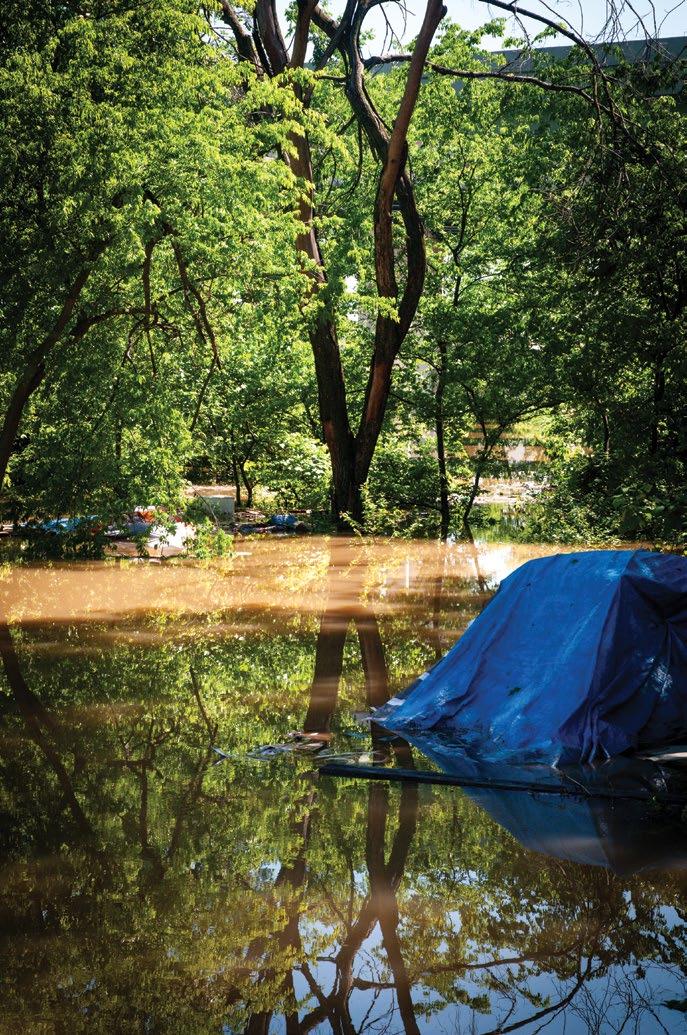

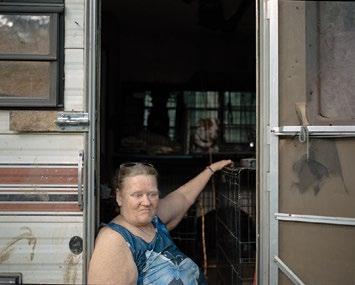


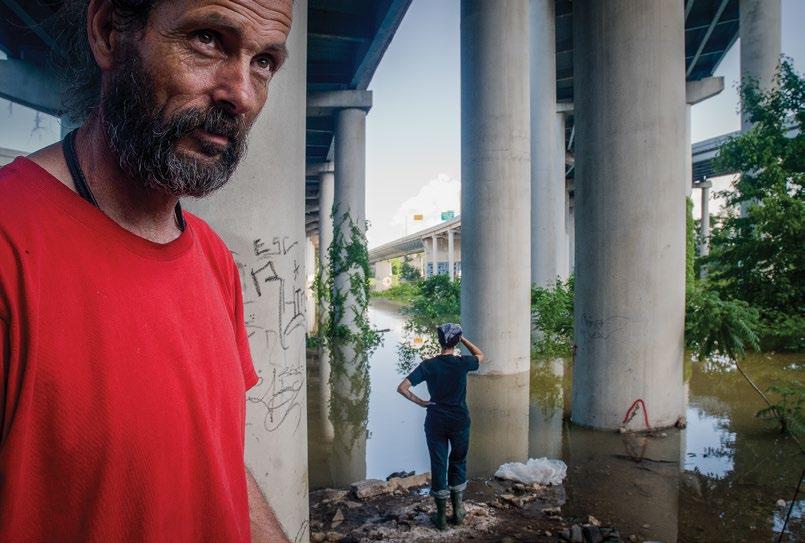
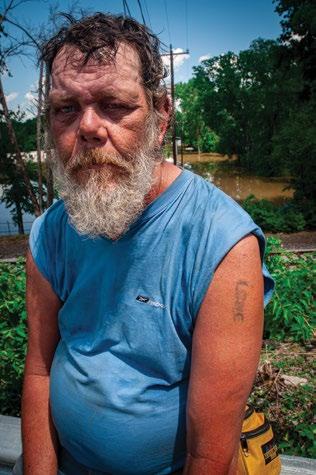
Beginning on May 1, 2010, Nashville experienced three days of record-breaking rainfall. Fearing a dam would give way, the U.S. Army Corps of Engineers released billions of gallons of water into the Cumberland River. Massive flooding ensued. Nearly 10,000 people were displaced, including over 120 residents of Old Tent City. Water rose around tents in a matter of minutes and residents lost everything they couldn’t carry.
An outreach minister helped as many people evacuate as possible, and I met dozens of drenched, disoriented residents and their pets at the Red Cross shelter.
When the shelter closed, city officials capitalized on the environmental disaster.
Old Tent City, like much of downtown, had been inundated with floodwater and diesel fuel. The camp, however, was labeled “condemned” rather than “contaminated”—a designation that excluded it from public assistance for cleanup efforts. We were told that anyone who went back would be arrested on the spot.
Some residents moved to other camps, some received FEMA assistance and moved into hotels or housing, and still others moved to a private two-acre parcel of donated land in Antioch until local residents ran them off.
“The gates of Antioch’s charity are closed,” said one local pastor.
The experience of journeying alongside
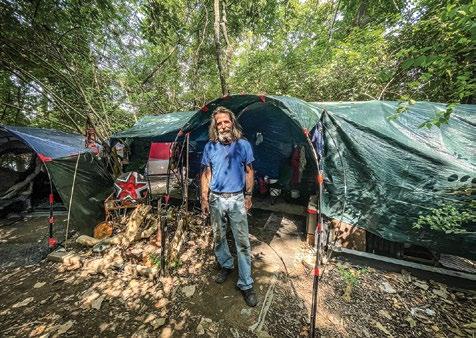
camp residents before, during, and after the flood led a group of us to start Open Table Nashville in the fall of 2010. We vowed to do everything we could to stand in the gap with people who had been abandoned by our city, our systems, and our society. We carry that promise with us to this day.
The population of Old Tent City remained low for years but gradually began to rise as other camps closed and people were directed there by police officers, outreach workers, and others on the street. Then came the pandemic. Camp populations across the city and nation surged as the economy shuddered and shelter capacity constricted. As other camps closed, more people were told to go to Old Tent City, and as the population grew, so did the problems.
Old Tent City has always been a microcosm of society where the most inspiring acts of hospitality co-mingle with devastating acts of desperation and harm. To romanticize the camp is as problematic as villanizing it. The truth about the camp is much more complex.
Some of the first camp residents I met — “Papa Smurf,” a carpenter who made driftwood crosses, and “Mother Teresa,” a saint of a woman — once cared for a man with a broken neck and two shattered arms in their “hospital wing.” When volunteer groups came down, they stocked extra food on their shelves to share with others, and

when the Mission turned away a man who was legally blind, they offered to take him in until outreach workers could find a place for him to go.
Then there was Stacey, Bama, Wendell, Vegas, McGyver, TeeTee and others who formed a self-governing council at the camp in 2009 and had security patrols, a donation distribution center and even first aid support. Later, there was Mama V and her crew, along with so many others, who brought stability, humor and care to those around them and adopted stray pets and people along the way.
“We’re street family,” they said.
Just as every coin has two sides, there were two sides to the camp. While some who gravitated to the camp built a community, cared for each other and connected with housing resources, others took advantage of vulnerable residents. Whether that was through selling drugs that promised to numb the searing pain in people’s lives or trapping residents in cycles of abuse, serious issues festered. There were fights, overdoses, deaths, hospitalizations and compounded trauma.
Just like the residents, the mulberry trees, blackberry bushes and thistles that grew on the land bloomed despite the toxic soil in which they were planted. The resilience of the plants converted toxicity into beauty and healing. But the tainted soil also contaminated some of the fruit.


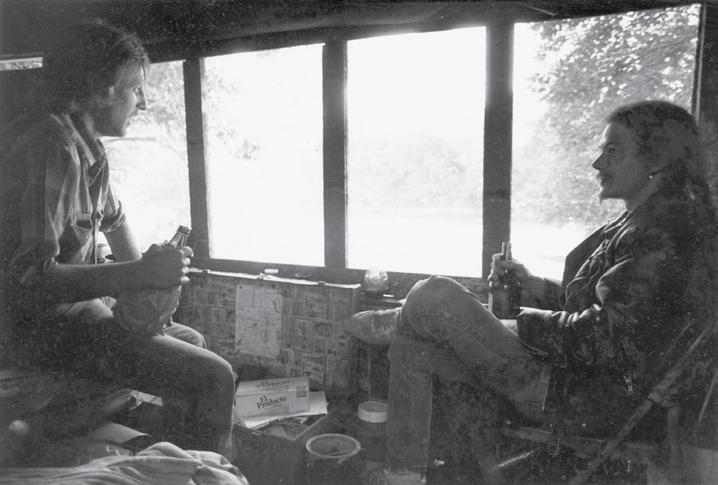
Long before European settlers arrived in the 1700’s, Nashville’s downtown area was home to Indigenous communities like members of the Shawnee, Choctaw, Cherokee, Chickasaw, and Mescogee nations. Cherokee activist Albert Bender and other historians say that before the 1400s, downtown Nashville and the surrounding area was home to a massive Indigenous metropolis of over 400,000 people with advanced agricultural systems, a salt-making industry and organized leadership.

In the mid-1400s, however, the population “mysteriously disappeared,” says Bender, perhaps due to environmental disaster or disease. The area later became a hunting ground with smaller villages for different tribes. French traders arrived and built a trading post in the late 1600s, and by the late 1700s, American explorer James Robertson founded Fort Nashorough, the European-American settlement which would later become the city of Nashville.
For years, cycles of cooperation, conflict, treaties, and land struggles ensued between settlers and Indigenous tribes. In 1830, President Andrew Jackson signed the Indian Removal Act into law, legalizing the forcible removal of Indigenous people across the nation. In Nashville in 1838, members of the Cherokee and Muscogee nations, as well as enslaved Africans, were brutally marched through downtown on the Trail of Tears.
This violent expulsion of Indigenous and Black residents of Nashville set the tone for what was lawful and allowable in the name of “progress” and development.
Legalized land theft for the sake of profit continues to this day. Gentrification is the cousin of colonization. Patterns continue until they’re broken and transformed, and we’ve yet to break those cycles. Nashville’s “soil” has been sullied with greed, displacement, inequity, and violence for centuries.
Before the 1850s, the area that became Old Tent City was owned by John L. Hadley, Sr., a well-known white enslaver and property owner. In 1854, Hadley sold the land to the Mayor and Aldermen of the City of Nashville. After the Civil War, the Tennessee School for the Blind was relocated and expanded at the top of the hill in the Claiborne mansion, and around the
same time, the Tennessee Central Railway was established to connect downtown with coal, timber, and other natural resources.
When the area was surveyed in the early 1920s, a plat map described a nearby lime kiln and pumping station. In 1927, however, a historic flood, more far-reaching than the flood of 2010, consumed the area. From 1938 to 1969, the property changed hands several times between the City of Nashville, private individuals, and multiple oil companies like Southern Oil Service, Triangle Refineries, and Chevron. The area was a hub for oil and transportation with multiple large oil tanks on site, the remnants of which are still visible today.
One of the first — and, ironically, one of the last — campers to call Old Tent City home was Arthur “Junebug” Mcquiston. By 1982 or 1983, when Arthur was in his early twenties, he wandered down to a “wide open” patch of land with a handful of others. “I built a shack down there,” he said.
“It was home. We governed our own, and most of the time it was pretty peaceful.”
He said he and his friends sought the area out because “we couldn’t get in housing and people were harassed by the police downtown. It ain’t much different now.”
Around the same time, tent communities were also flourishing along other stretches of the Cumberland River on the East bank.
Photographer Lee Steenhuis documented two such river camps beneath the downtown and East sections of the James Robertson and Woodland Street bridges in her tender exploration of misfit-communities, “Hippies, Fairies, and Trolls.” There were well-constructed shanty-homes with porches, flower pots, and woodburning stoves. Veterans, like Arthur, trainhoppers, and others who had been pushed to the fringes of society were creating their own alternative societies in the shadows of Nashville’s relentless progress.
According to Arthur, homelessness in Nashville started picking up in the early ‘70s.
“There were transients coming in, train hoppers, and a lot of mental patients that were turned out on the streets,” he said.
“Then in the ‘80s was when we had a lot more people out.”
Arthur’s recollections track with local
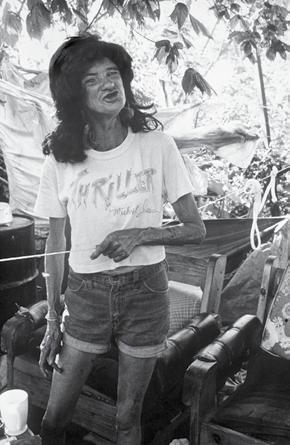

and national trends. The deinstitutionalization of psychiatric facilities picked up in the 1960s and 1970s and failed to provide adequate community-based mental health resources across the country. At the same time, veterans were coming home from the Vietnam War without the safety nets they needed, and the misguided and deeply racist “War on Drugs” was gaining steam.
Researchers say that the early 1980s marked the beginning of mass homelessness in America — a cascading result of faulty policies in the ‘70s, the economic recession, and, most notably, the Reagan administration’s devastating decision to gut funding for the Department of Housing and Urban Development (HUD) by 78 percent, cut food stamps and Medicaid, and dismantle social safety nets and programs.
In 1985, Harpeth Hills Church of Christ purchased a tract of land beside Old Tent City at 185 Anthes Dr. This would become the site for Inner City Ministries (ICM). Instead of displacing Tent City residents, ICM’s staff began a chapter of radical accompaniment, grounded in the Christian principle of “loving your neighbor.”
“There were a lot of very good people there,” said Lytle Thomas, humble founder of ICM. “My office was right over the fence. The residents had free run of the place and would come in with us and have coffee in the morning. They enjoyed being there and we enjoyed having them. They helped us and we helped them.”
He continued to share about how ICM allowed residents to charge their phones and use their water.
“They protected and took care of our property, for the most part,” Lytle chuckled. “We had to watch some, but we also hired residents to drive our buses who had their CDL licenses. They drove for us, got other jobs, and moved on.” When I asked him about why he and other ICM staff took that approach to the residents, he said, “You just have to get out of your comfort zone. Love people. That’s the answer.”
After the flood in 2010, ICM relocated and in 2015, Pyles Transport bought the land while the camp continued to grow. In 2022, the Metro Government of Nashville bought the property with the intent to develop it into a $70 million park — a move that marked the beginning of the end of Old Tent City.
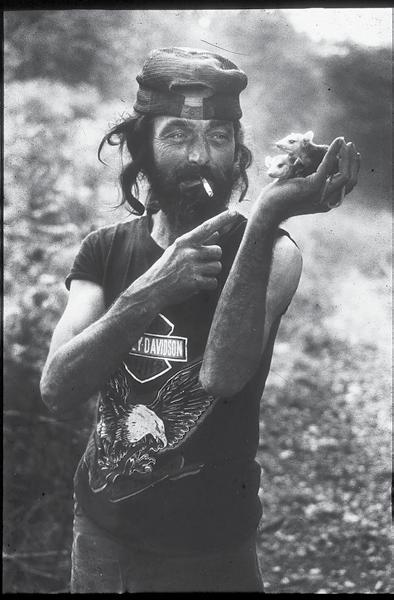
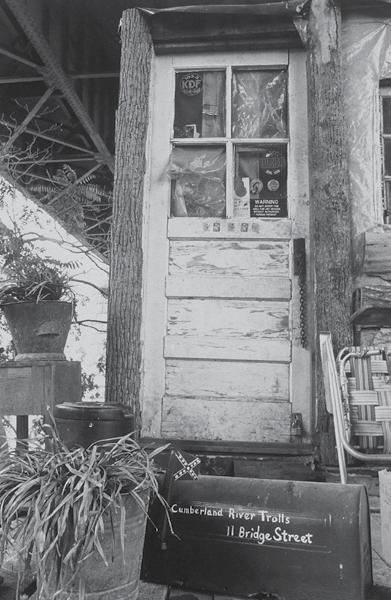
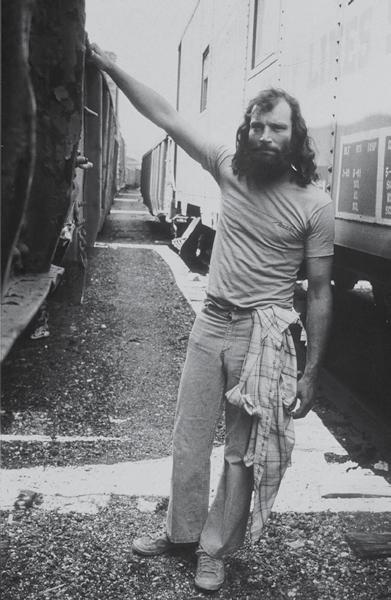
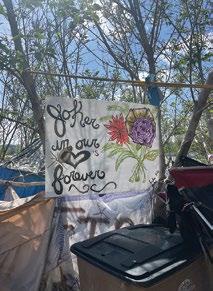

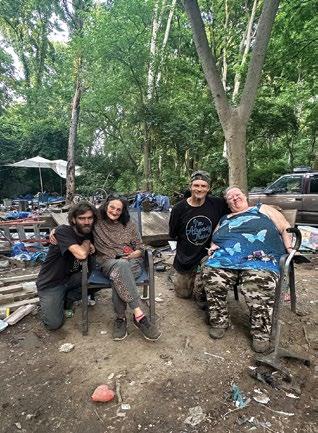
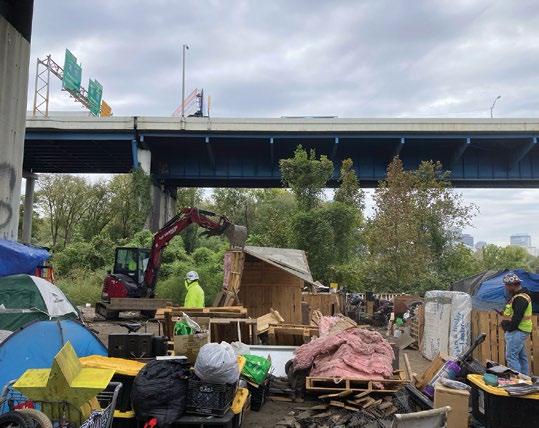

My phone buzzed late in the evening on Sept. 6, 2024. It was a text from Moses, one of the residents of the upper portion of Old Tent City whom I’d known for more than 10 years. The text contained no words, only a photo of a notice that had been posted throughout the camp early that morning.
“All structures are scheduled for demolition the week of September 16th through the 20th,” the notice read. It also informed residents that they had to “move out no later than September 13th.”
Confusion and chaos ensued.
At this point, Old Tent City consisted of a number of smaller “subdivisions,” all with their own character. On the asphalt lot toward the top of the hill where Moses lived, most residents stayed in parked RVs, campers, and vehicles, some with their own generators and solar panels. Just down the hill before the tracks around old oil tank rings, a more transient network of residents moved in and out with larger, well-guarded structures toward the cliffs.
Past the tracks and beneath the Silliman Evans bridge, clusters of tents and structures were sprinkled about, holding folks with close ties. Dallas’ two-story treehouse was the center of one cluster and had its own bathroom and septic system. The second story was built around a tree with sliding beam brackets that allowed it to move naturally in the wind. Tyrese’s iconic dome house was another hub closer to the river. His structure, built with reclaimed wood, was the result of skills he’d learned years before at the Fort Negley encampment before it was

clear-cut by the city.
In the wooded area along the riverbank were over a dozen different camp areas, all with their own character. There was Will’s fully constructed house with a mailbox, kitchen, electricity, and self-proclaimed address. Further down was Mama V’s RV and camper lot with numerous dogs, a couple cats, and a never-ending supply of “street family.” And closest to downtown, Shay’s tightly run community had its own governance structure, rules, and sense of belonging.
After calling around, we were able to piece together that the Tennessee Department of Transportation (TDOT), who owned the land beneath the Silliman Evans bridge, had placed the notices in conjunction with several Metro Departments. The target of the demolition was six to eight of the homes that were built by people in the shadows of the city that abandoned them.
We had seen this play out before and knew what was coming. Bulldozers. Chainsaws. Skidsteers. Barbed wire. Not just for those in the structures, but for everyone. New luxury condos had recently gone up across the road, and this was prime riverfront real estate, slated for a new shiny “Wharf Park.”
The week after the notices were posted, our team at Open Table Nashville met with over two dozen residents beneath the bridge to hear from the impacted residents about their needs, concerns, and hopes.
“We can’t just pick up and move,” said Dallas. “We have memories here.”
“We’re taxpayers and we pay for the highways we live under,” said Arthur who was back at the camp after being on and off the streets for over 30 years.

During the meeting, residents decided to write a petition to TDOT, Mayor O’Connell, and Council Member Jacob Kupin to share their collective requests. Those included a 90day extension on any demolition process, the installation of dumpsters and regular trash pick up, permanent housing for residents, a campground where people could go when Tent City closed, and relocation support with access to storage, tents, and tarps for anyone who was displaced.
After some back and forth, Mayor O’Connell established a working group at the city level, a 30-day extension was granted, a plan for dumpster installation was approved, and our team at Open Table Nashville stepped in to raise funding for relocation support.
On the cool, bright morning of Oct. 15, the rumble of bulldozers and excavators rustled birds from their trees and caused an uneasy hush to fall over the camp. It was demolition day. The residents had moved from their structures, but a somber, sick feeling set in as the machinery dismantled the homes, beam by beam. How much longer would we have to bear witness to the violence of a city that tears down people’s homes, always telling them where they can’t go, but rarely where they can?
Life continued at the camp through the fall and the long winter. There were move-ins, deaths, and every form of high and low imaginable. On March 31, 2025, just as the spring was taking root and thistles were in bloom, more notices came, this time from the Mayor’s Office and the Office of Homeless Services.
The notices told the roughly 120 residents that in 60 days, the camp would close for good.
Just as the existence of Old Tent City defied simple categorization, its closing was also filled with complexity. For some residents, excitement buzzed in the air. This was their chance to escape the living hell of the streets. Their names were bumped to the top of the priority list by the Office of Homeless Services. While hundreds of people who were unhoused across the city waited, Tent City residents were ushered into mostly transitional housing at Rodeway Inn which had been kept open for such a time as this.
For other residents, however, uncertainty, anxiety, and skepticism burrowed into their shoulders and chests, weighing down any sense of optimism.
“You have to realize that there are some of us who struggle with being inside, in a box,” said Shay, the fearless, deeply caring, punk leader of the back section. “It’s because of our past, our traumas. Some people will go out of their mind indoors. We need other options.”
What would it be like to move out of the community they created? What would it be like to be relocated to a section of Harding Place or another area far outside the city’s center; to be rushed into options they might not have otherwise chosen?
Mama V and her crew had eight dogs, one cat, an RV, a camper and a car. Their desire was for land that they could call their own, land they could use to help others in need. “We could call it the Community of Hope,” said Linda, Mama V’s fierce and wiry campmate.
In a new petition she co-authored to Mayor Freddie O’Connell, signed by 20 other current

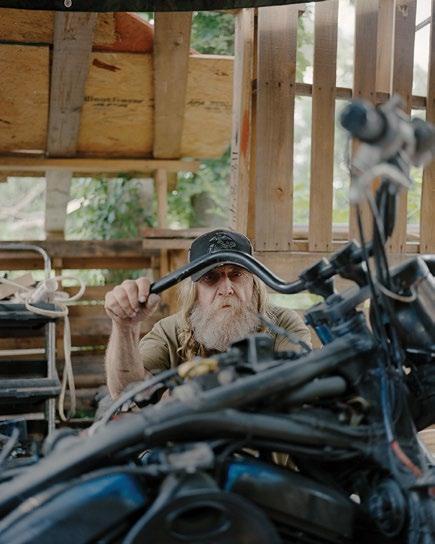
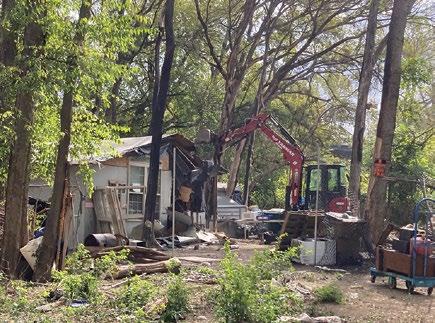
and former residents, Mama V wrote, “All we need is land that we can make into a homeless community. Give us a chance to use part of this land to be a landing place for people. If you take Old Tent City away, people need somewhere to go until they get housing.”
The ultimate goal was always permanent housing — “we want housing,” the petition read — but more was needed for those without.
The petition also invited O’Connell down to the camp to meet with the residents about their concerns. “We want you to physically come down here and see what we’re going through and how we struggle. Visit us. Spend a night or a week out here with us. Try to walk in our shoes.”
O’Connell agreed to meet with camp residents, which buoyed their spirits, but after a press release was sent out detailing their petition, his scheduler cancelled without sending regrets or an explanation.
The closer the deadline got, the more rushed the process felt, particularly for those who didn’t fit into easy boxes: those in RVs and campers, those with histories of trauma and severe mental health issues, and those with background or documentation issues.
Our team at Open Table Nashville amplified the residents’ request for a phased closure, more time, and another site where people could go. We were met with silence and rigidity. We did what we could to support the residents who were most at risk of falling through the cracks. We raised funds to repair and tow RVs, campers, vehicles and motorcycles. We found parking spots, paid fines, reinstated drivers licenses. We journeyed patiently with those who were struggling to pack up their belongings and say goodbye to the place they called home
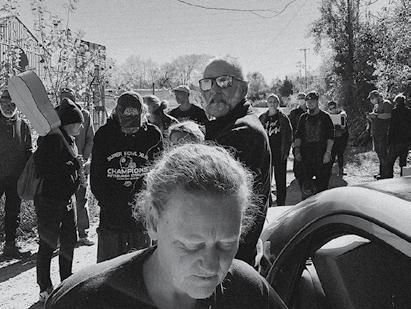
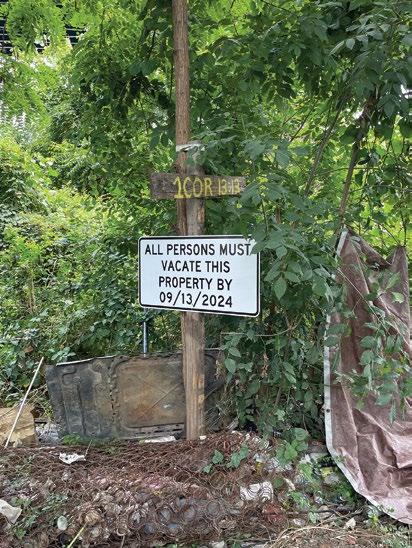
when there was nowhere else to go.
On Sunday, June 1, the day before the closure, there were still over a dozen people who were unsure of their plan, but that didn’t stop the contractors, fencing team, and bulldozers. Monday morning, OHS leaders and MNPD officers led a crew of business men holding parcel maps through the camp while residents were still there. Then came more skid-steers, some of which we had to stop from clearing camps that were still occupied and tents that hadn’t yet been checked.
Every barrier was rolled away for most of the remaining residents who could be found and were willing to work with OHS. One man was found screaming in the woods and a woman was institutionalized against her will. Another man was relocated with his motorcycle. Still others went unaccounted for, leaving for reasons we’ll never know.
Instead of getting to create their “Community of Hope,” Mama V and her crew were moved into a run-down home which is still, four months later, in a state of disrepair.
At the time of the move-in, hurriedly arranged by the Office of Homeless Services, the former tenants were still in the house, which was covered in trash and filth and riddled with electrical issues. There were gaping holes in the walls and ceilings and the house lacked AC and a functional fridge and stove. It was unlivable, but OHS rushed to patch things up and compensate for what they could. The camp was closing and this was labeled as a success.
Only time and thorough follow-up data will prove if all of OHS’s encampment closures have been as successful for camp residents as they’ve been for OHS’s media headlines.
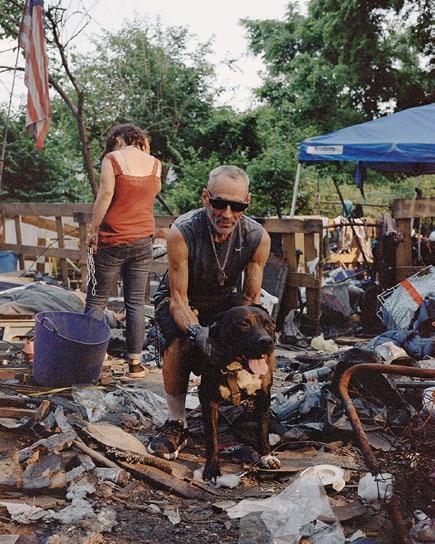
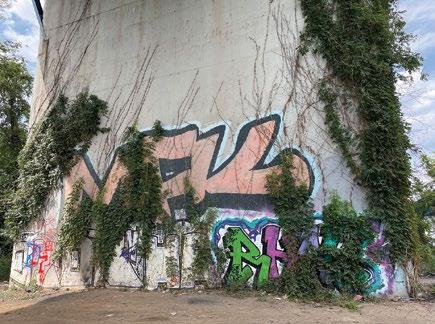
OHS reported that their original list of OTC residents included 125 individuals, but the list was never shared with community partners so there has been no way to independently verify who is doing well and who might have fallen through the cracks.
There is no doubt that staff members at OHS truly care about moving people from the streets to housing. But was this closure ultimately more about the long-term stability of the residents or pleasing those in power whose interest is in the “revitalization” of the riverbank and developing the land into another playground for the rich?
“Closing this camp is a temporary Band-Aid that you’re thinking is gonna solve things, but it ain’t,” said Mama V before the closure. “We see all the new people who are coming through. Campsites are being bulldozed everywhere. Where are people going?”
“Oh, can y’all help me with housing? My time at the halfway house is almost up.” One of the other men explained that he had recently gotten out of prison and needed help with housing, as well.
Vanderbilt researcher Beth Shinn says “we’ll never end homelessness until we stop the flow of people entering into it.” Closing an encampment cannot be called a success until the underlying causes of Nashville’s housing crisis are addressed. When we have enough housing and resources for all, camps will shrink and close on their own.
If you were to drive one mile south of downtown and hang a left on Anthes Drive in two years, 10 years, 100 years: what, and who, would you find? What stories will be told and what stories will be erased?

Three months after the final closure of Old Tent City, my coworkers at Open Table Nashville — India, Kelly, and I — went down to walk along the familiar tracks. We ran our fingers along the cold chain link fence, topped with multiple rows of barbed wire. As we walked, three members of the clearing crew came up to the fence. We waved, a gesture of goodwill, and they waved back.
“Who are y’all with?” asked one of the men who was heavily tattooed.
“Open Table Nashville,” said Kelly. “We do outreach.”
Papa Smurf. Mother Teresa. Pontiac. Arthur. Moses. Dallas. Shay. Mama V. Linda. And so, so many more. Remember their names. Even when the land is developed beyond recognition, the earth will hold the memories of all that came before. Every name, every loss, every win. Every thistle, mulberry, ironweed, and trumpet vine that climbed the columns. Every sacred and sullied iteration of history. We will not forget.
Thank you to Kelley Sirkoand the Nashville Public Library Archives, archives for providing information on the history of the land from the 1850s-1969. A portion of Old Tent City’s history is captured in the documentary Tent City, U.S.A. and the books “I’ll Take You There: Exploring Nashville’s Social Justice Sites” and “Praying with Our Feet: Pursuing Justice and Healing on the Streets.”

Darla the dog came to visit us in the fall of 2008. It was when we lived in that little duplex right by the train tracks with car-glass and graffiti in the backyard. She wasn’t scared of the train whistle and she wasn’t upset about our cats so we thought we’d try her in the house.
From that day, she lived with us for more than 16 years. Darla loved people. She expected that people were good. And she learned that at Old Tent City.
She was born by the river in a little tent, (or, more likely near a tent, but there aren’t songs about that.) We’ve heard it was a litter of eight puppies, three boys and five girls. She was a white dog with big black spots over her face and back and little black specks all over. One ear up and one ear down. And she grew up in community with people who had to take care of each other. It was hard to get the story. First she was Carl’s dog and then Junebug took care of her (when Carl had a surgery) and then Carl moved back home and maybe Vegas took her for a little bit. Somewhere in there somebody fell on her and hurt her back. She recovered on her own but it never completely healed. Aunt Laurie got her to the vet and back. Dr. Mark did her first round of shots (and almost every checkup until her last). Jeannie saw that she was ready to leave and got her out.
She wouldn’t accept a treat from a stranger. She loved to see just about anybody, but was
BY MARK LEMLEY
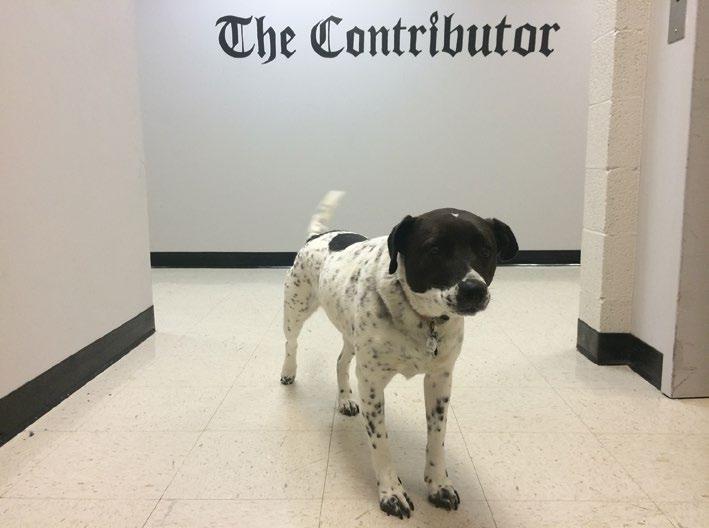
always suspicious of people coming toward her at dusk, especially through the woods. She would go all the way to the edge of the yard to poop, something else I assume she learned from campsite life. She was somehow housetrained from the first night she spent in a house.
Once she was ours she went everywhere. Spent days at The Contributor office greeting vendors. Learned to run all around Downtown Presbyterian Church (with only one close call on the ledge of the sanctuary balcony. All those Civil War ghosts weren’t gonna let that one
fall.) She earned her AKC Canine Good Citizen status without even really trying. She was the fastest dog at the Shelby dog park from 2009 to 2011 (they don’t keep records, but I do.) She ate Tasha’s favorite hat and the Bible my aunt got me for my high school graduation. And she ate more chocolate than was recommended and killed more possums than I would have preferred (3). But other than that she was without flaw. Old Tent City took care of Darla for her first nine months. She took care of us every year after. Herded us together. Let us know when the UPS guy was coming. Taught us games we never would have imagined on our own. (If you’ve never chased each other around, spinning on the rug, and squeaking Amazon packing-air-cushions until they finally pop, you’ve got to try it.) There’s so many people who took care of her along the way (Randy and Harold, Will and Kerri.) and there’s so much more to tell. But there always is.
Darla died on April 1 of this year. The day after eviction notices were handed out to Tent City residents — just before its 2025 closure. She was 17. She wasn’t the only great thing to come out of Old Tent City, but she was the one I loved the most.
In lieu of flowers, buy a Contributor from a vendor or send a “thank you” note to your vet on a day when all the pets are doing just fine.
In April 2025, Nashville’s oldest and largest encampment — known as Tent City or Old Tent City — was closed by Metro Parks, Metro Police, and the Office of Homeless Services. Located off Anthes Drive, this land had served as a sanctuary for unhoused residents for over 40 years. It was never just a camp. It was a community, a landing place and a lifeline for thousands who had nowhere else to go.
On March 31st, residents were handed 60-day eviction notices signed by OHS and Mayor Freddie O’Connell. In response, 14 residents drafted a petition asking for four things: a meeting with the Mayor, permanent — not transitional — housing, more time or a phased closure and access to land to continue using as a safe haven.
Their words were clear:
“We want housing—not transitional housing, not temporary housing, not motels — permanent housing .... Even if you moved everyone at Old Tent City into housing, it isn’t going to fix homelessness.”
As Nashville’s first Chair of the Homeless Planning Council (HPC) to have lived experience of homelessness, I did not live at Old Tent City—but I stood with its residents First Chair to EVER, that says alot. I witnessed the systemic failures that allowed this encampment to persist without meaningful support, and I spoke out when the city chose rapid displacement over dignity. I want to express my gratitude to Open Table Nashville and The Contributor for their unwavering support in this communal effort. Their dedi-
BY KENNETHA PATTERSON
cation inspires us as we call upon our leaders to prioritize inclusive, community-driven solutions to address the breakdown of this 40-year encampment.
Tent City was not without its challenges. The absence of consistent oversight created vulnerabilities—ones that could have been addressed through intentional policy and partnership. But instead of investing in care, the city chose clearance. The lack of oversight became a convenient excuse for displacement, not a call to accountability.
Rapid decision-making risks sidelining critical voices and insights, including the urgent need for resources like street psychiatry, which was emphasized in our latest HPC meeting.
Achieving meaningful progress requires collaboration across all sectors, ensuring every voice is heard and valued as we shape Nashville’s future.
The broader context is sobering. In February 2025 alone, 1,106 evictions were filed in Nashville. For every one person housed, nearly eight were entered or re-entered into our Homeless Management Information System. TDOT continues to fence off major underpasses. Section 8 vouchers are paused indefinitely. New legislation makes it easier to clear encampments on commercial, residential, and public land. Across Tennessee, we lack over 3,500 year-round shelter beds and 121,000 units of housing for extremely low-income renters.
Residents at Old Tent City understood this reality better than anyone. Their petition
asked for land to build a community, to clean and care for it, to pay property taxes, and to create a space for those who can’t access traditional shelters. Their vision was not just practical — it was prophetic.
I wasn’t aware of the misleading “Metro” signage until long after the closure had already happened. But once I learned the full scope, it became painfully clear — this wasn’t just displacement. It was erasure. While Nashville invests millions to welcome tourists with polished parks and luxury developments, the city quietly removed a 40-year-old community that had long served as a last refuge for its most vulnerable residents.
When I raised concerns, the pushback I received wasn’t met with transparent dialogue — it was silenced. There’s a discomfort in confronting the truth behind these decisions. It’s not fear of the Office of Homeless Services — it’s fear of what honest reflection might reveal: that this land held lives, stories, and sacred resistance. And that those truths don’t fit neatly into the city’s new image.
The closure of Old Tent City didn’t just displace residents — it exposed a deeper pattern of exclusion. Across Nashville, lived expertise is being sidelined in decision-making spaces where it should be leading. Those of us who have survived homelessness, trauma, and systemic neglect carry insights that no policy manual can replicate. Yet too often, our voices are tokenized, undercompensated, or erased altogether.
What’s happening now is more than over-
sight — it’s a quiet dismantling of the very leadership that could transform our systems. Instead of investing in peer-led models, we see advisory roles stripped of influence, and community members asked to “share their story” without being invited to co-author the solutions.
But there is another way. Peer-to-peer support and co-authorship are not just compassionate — they’re strategic. When people with lived experience collaborate to design policy, shape services, and hold systems accountable, the outcomes are more just, more sustainable, and more humane. We don’t need more panels — we need power-sharing. We don’t need more surveys — we need seats at the table, with stipends, decision-making authority and respect.
Tent City wasn’t a blemish — it was a mirror & a model the Unused Pods could be poised for only if they ask lived expertise. It reflected what happens when systems fail and communities rise anyway. Its closure marks more than a policy shift — it marks a moral one.
As I submit this reflection not just as a former HUD COC HPC official, but as someone who refuses to forget — and who believes in the power of co-authorship. This land held us. It held the truth. And as Nashville polishes its image for tourists, we must ask: who gets to stay, and who gets erased?
They cleared the tents, but not the memory. THEY were here.
We are still here.
And we have always been ready to lead.
MaeMae, Mav, Cindy, Logan, Slim, Soul, Troy, Patrick, Ed, Tim, Ricky, Charles, Cowboy, Donnie, Mama V, Pops, Gary, DC, Robert, Moses, Rebel, A1, Amanda, Carl, Jessica, Matthew, ReRe, James, Ninja, Hillbilly, Hollie, Mark, Sandman, Too-Tall, Jim, Tab, Roach, Daniel, Janice, Barbara, Inky, Casper, Freedom, Ray, Chip, Steven, Jimmie, Alexander, Aaron, John, Jerry Wayne, Anthony, Hall, JJ, Richard, Dane, Reed, Jo, Jack. In no particular order, some of my friends whom I made from Old Tent City. Some of whom I lost, but not to Old Tent City. Their names deserve to come first, before anything I could have to say about Old Tent City. Once simply “Tent City.” But that was before me.
I grew up overseas. I was born in one country, moved to another, moved to the United States for the first time in my teens, and by this point in my life have three places across the world I consider home with a fourth that feels as if it got buried in the ground with my grandfather. How many homes did your heart claim? How many of them have you had to bury?
Ten years ago, while canvassing for people stranded out in our cold, Nashville winter nights, a veil — of some alchemy of innocence and ignorance — which laid over my eyes was windburned away. Despite having been involved with a weekly Monday night outreach for five years by that point, I had never been past public or neutral spaces to meet people who
BY ANDREOS CHUNACO
were living life in homelessness. Seeking them out when they were about their days and where they were in their homes transformed my sight and who I was as a person. I even found a new circle of people in that depth of the trenches doing “the work.”They were the first people I heard calling our neighbors on the streets heroes and heroines; the strongest, the most resilient, the holiest of friends and strangers. I confess it took me another six years to catch up to the next depth of reality. In the meantime, I smiled at the ideas and sentiments of things heard. I would also repeat these newly-common-to-me colloquialisms and the platitudes because I believed in them theoretically. On paper. In abstract. In a cool but also sweet way. In context. “I guess.” At some point, without an epic event horizon or announcement, speaking those words suddenly came from underneath the crushing weight of their truth. They practically released amidst pressure. Sometimes eked through grief yet were exclamations by their very nature. They feel now like the words I use when I speak of missing my Poppop. Equivalent, and there could be nothing more measurably and viscerally real.
In the same vein, throughout all my years working alongside my friends on the street, I heard innumerably how Old Tent City and their camps are their home. Attempts were made to clarify what they meant, and sometimes

Wendell Segroves, a skilled craftsman and a former member of the Metro Homelessness Commission and Homelessness Planning Council, moved to Old Tent City in 2004.
“There were only five people there and I had to be invited in,” he said. “It was Nashville’s best kept secret.”
In those days, the camps were spread out. “We kept to ourselves,” explained Wendell. “Most of the trouble came from people who didn’t live there. But in 2008, people really started coming.”
The first home Wendell constructed at Tent City was out of billboard tarps, metal fence posts for stakes, and the elbow of a tree. He even received permission from the billboard company to tap into their electricity. Things weren’t easy — he was stabbed and jumped twice — but it was a place he and his dogs could call home while he was getting back up on his feet.
“I used to be one of those people who didn’t like the homeless,” Wendell said. “I didn’t realize how easy it was to get down there and how hard it was to get back up.”
Wendell continues to give back to people whenever he can.
other attempts were made to downplay said dynamic in lieu of the housing our conjoined efforts were aimed towards. In all honesty, zero headway was made in fully understanding how such a treacherous location could be held as home despite years of constant witness to the phenomenon wherein former residents of Old Tent City who recently secured housing would find themselves continually visiting the place and people they moved on from, not able to understand or articulate why but living it out nonetheless. Understanding how homes can happen despite violence, vermin, sickness, floods, tornadoes, theft and death is, in fact, beyond me (actually, now that I list them it sounds like some of my homes too). Perhaps it simply happens. Amidst. Like a wildflower, or a good heart from a crucible, or something from nothing. And I find this sneaking suspicion that before me exists no housed way possible to understand and feel the gravitas of that truth. Far beyond my experience and empathy is the reality that to hundreds if not thousands of people over the course of decades, Old Tent City was a home — that held purpose, safety, survival, imperfection, space, relationships, memories, milestones, warmth, privacy, possibility, sleep — buried. Our city’s largest constant and longest standing space, enough to hold anyone entering or in the mid dle of homelessness. Elderly who lost income and housing to lockdown, runaways and youth

When we began our documentary, Neighbors We Left Behind, three years ago, we aimed to shed light on the disparities faced by the unhoused community in the wake of recent legislation. What we didn’t expect was to be so touched and ultimately impressed by the stories that were shared. We naively didn’t realize the community formed between those living on the street. Old Tent City is the greatest example of how that community can transform lives.
We didn’t get a chance to visit the camp until its days were numbered, but even then the camaraderie was clear. The residents of Old Tent City had created their own city on the outskirts of Nashville. When society tried to push them aside, they banded together to build structures to live in, some of which even had running water.
Old Tent City wasn’t perfect. Those we spoke with who were living in the camp, openly shared the hate they faced—not only from outsiders but also among themselves. They, too, wished for a cleaner, safer environment; however, uprooting them from their homes that they built with their own hands is not the solution. For those who call Old Tent City “unclean” or “violent,” I urge you to look deeper. Being forced to hide from society means no trash pickups, and living outside constantly in survival mode can make anyone irritable, sleep deprived and disoriented.
aging out of foster systems, couples who still have one another, pets, entire families. Old Tent City was there for them all.
I have no expectation that you will understand what I do, or see things I see, or feel things I feel. I can only say I met the rich and the powerful and left wanting, knowing how extraordinarily normal they are despite their extraordinary odds. They say to never meet your heroes, but I met and befriended mine. They were born with and into things we could all touch and taste, and I have only grown to know how much they, despite their extraordinary odds, astound me in their lives and also in their deaths. All I can hope is that you might trust the words of my heroes. I believe them, and that means Old Tent City mattered in ways we cannot comprehend nor calculate the loss of. [And maybe one day I might write to you about how all the wrong people and enragingly too few of the right people showed up in the last days of Old Tent City when the most vulnerable of the already vulnerable were evicted, and it was finally erased. A story of the ones who might retweet some form of “Fight like hell for the living!” and should now find the eyes of anyone in past, present, and future need of Old Tent City and say to them, “I failed to go
BY ELIZABETH PHILLIPS
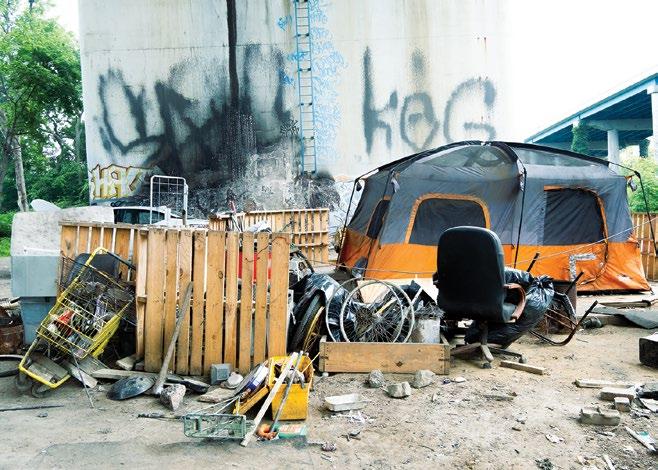

All of these factors can adversely influence interpersonal relationships. It is essential to recognize that when individuals are forced to hide from society, their circumstances become a breeding ground for misunderstanding and prejudice.
Old Tent City offered more than just a roof for some. It provided community, camaraderie, and a sense of belonging. For many, it was a sanctuary, while for others, it was a final refuge in desperate times. Although its surroundings may appear unsafe to those unfamiliar with its reality, I implore you to cultivate
empathy for those whom society has sidestepped and dismissed. Everyone deserves dignity in life, the right to exist in a space they have made their own, and the respect afforded to any other resident of our community. No one should be forcibly removed from their home, especially when that home is merely a manifestation of their survival. As we reflect on our journey filming Old Tent City, we are left with a profound recognition of our shared humanity and the urgent need to approach homelessness with compassion and understanding.
BY FREFOREVER/FOREVERFREE (AKA FYNALLE F.), CONTRIBUTOR VENDOR
I was asked the following questions. What would you want the next generation to know? What message would you like to leave them? Here is what I said.
Words of Wisdom
1. Know what the meaning to love is for you. Love is patient
Love is kind
Love is long-suffering
2.Know the love is a choice.
Choose to love yourself first and then others. You can love others without losing yourself.
3. Know what the meaning of living is. Living is a choice. Life is a gift.
4.Choose to live your life to the full. “Leaving nothing in the cup.”
BY SHORTY R., CONTRIBUTOR VENDOR
Do you ever feel suck in the middle? Wondering what and where you was going? You study it for a while, your plans and goals. You pray on it too.
The world is buzzing past you as you sit. You turn left. You turn and it is going pretty good at first. Then it starts going bad. You stop and study it and pray on it again.
Now you turn to the right. It is going real well.
Then you stop and study it again. Things are still going well. Keep going. You are still going strong. Everything is going great. You are making it, you are acing it. Making great strides.
Keep going.
Just stopping now and again. Keep focused. Study your path and plans and pray on it also.
Dear God
LASHIKA, CONTRIBUTOR VENDOR
Dear God, I pray that you bless all my family and friends who need help. Give strength to those who feel weak. Lift the burdens of those who are struggling. In Jesus name
I really need some help from everyone! Send some letters or emails to The Contributor to help me! The problem is this: I am 60 years old with no criminal history. I have never once voted! I am now a registered voter!! I am writing a one of a kind book that is almost finished. In the process of doing this, I really had to dig in American and global history. Everything was clear as mud. I did however stumble across a great deal of interesting things that I needed to see clearly.
One thing I learned was that the party of the Elephant was given birth by the party of the Donkey in that day. The Donkey was wanting slavery to continue to flourish even into the final frontier of the West. The Elephant stood in the way to eventually lead to our Civil War. It really sucks that so many had to die to straighten the crooked ways of people. This was even after, “We the people, in order to form a more perfect union ….” The words were apparently useless!! “We the people” excluded even the rights for women to vote! Perhaps the actual dictionary didn’t define the word people correctly. This is obviously true because soon afterwards, my progenitors were marched down a final trail ride we all know as The Trail of Tears. Obviously, the definition of the word “people” still wasn’t corrected in the dictionary. The picture of The Cherokee obviously wasn’t going to help. “The more perfect union” obviously excludes people. They simply weren’t perfect enough. This was done by Republicans and Democrats both. This is true only because both groups of people were alive. I know the actual war had not yet began. The ideologies of people were very much alive and well. The underlying truth is that money and the ability to make it was involved. You really have to look under the layer of Artificial Intelligence too see it, “clear as mud.” American politics!
During World War II, an amazing leader by the name of Franklin Roosevelt united us for a cause. The cause was our way of life and right to exist. That is a great reason for Elephants and Donkeys to be united. How quickly we forget as all those who remember what it was like are mostly gone now. A Democrat President going to a fourth term really tells the American story. We can’t have that!! Two terms only from now on. Later we have a Republican, Ronald Reagan, “Mr. Gorbachev, tear down this wall!”
Obviously there is more to the story. I am aware. To this very day the party of the Donkey despises this man because of Reaganomics, as we call it now. I remember in elementary school being taught to go to the basement or hide under my desk at school in the event of a nuclear war. I personally own nothing except a really big thank you to Donkeys and Elephants alike!! My children grew up knowing nothing of this fear!!
BY JEFFREY W., CONTRIBUTOR VENDOR
Today, more than ever, it is clear that we have left and right handed Donkeys and Elephants, which means we actually have at least four political parties as far as actual ideologies go. It’s rather amazing that there are also four gospels. My entire life has been in some way affected by these four. People fight and argue about these four and how some things vary from one to the next. Never once have I heard a theologian very simply explain that the actual answer is in the real titles of these masterful writings, “The Gospel According To” is the real title to these books of Matthew, Mark, Luke and John.
Because the vision is clear. “We know the whole truth,” they say. A big discrepancy they have is when the stone was rolled away. What side and where were these Angels? The left or the right? I think it was Mary Magdalene that said, “One was at the feet and the other at the head of where he once laid.” This means that one had to be at the left while the other was at the right! Sounds like American politics to me. Over 200 years of bouncing back and forth to keep America on the chartered course to get us to where things are as clear as mud! Why not go to the source, which is the one who obviously isn’t dead but obviously has been using the right and the left for centuries.
Will I even be able to vote for an individual candidate because I like only the issues he stands for? I found out the hard way that every house of worship will not tolerate behavior such as mine. How dare I not stand with each and every thing their party or church stands for. You will be very, very unwelcome should you do this!! They all have Donkey churches and Elephant churches with a whole new gospel. So today, I am churchless and party less. Help me, I say!
Perhaps I have to keep my voter registration card as a family heirloom for my great grandchildren that aren’t born yet. That way they can have some kind of a chance to understand how good America is, or was. That depends on the Donkelephantitus infection and how our wounds heal. It is very confusing. Those during the Revolutionary and Civil wars that remained neutral were killed by both sides!! I must vote, evidently, if I don’t want to be executed. Is it possible that perhaps I need to stand in between both angles where Christ did as he’s the source of them both. Things look as clear as mud as everyone is using the same manual. I wonder who masterminded that? The answer to that is the same. King James the VI of Scotland became King James I of England. His first order of business was to take over the church of England and kill all the opposition. That was standard procedure in those days. His mother, Queen Mary was nicknamed Bloody Mary and was executed by her cousin, Queen Elizabeth I of England, for trying to force her religion in the wrong places. The Archbishop Richard Bancroft became the overseer of what we
now call the King James Version [KJV] of the Bible. He had to change his religion and be very convincing to King James simply to live long enough to help everything be clear as mud four centuries later. People actually wonder why I can’t go to church. I simply have a hard time being brainwashed. Perhaps mud simply can’t be purified unless you accept the fact that it takes clear water and dirt together!
The clearest and most pure rivers I have ever been blessed to see are up in the mountains. The foundation and the right and left banks are only rock and have no dirt on either side. That’s where they begin. It doesn’t take very long before they join Euphrates. The word Euphrates actually means “great river.” So by the time Euphrates gobbles up the clear water and brings the dirt from under and both sides it is yep! The muddy Mississippi. By the way, Mississippi has four “i”s. Two for the left and two for the right. Hopefully this is more clear than the mud. I pray you actually enjoyed reading this with clarity. Stay out of the dirt!!
Out of probably hundreds of teachers of theology or preachers I did actually get to meet here in Nashville, one was a joy to be around. A humble person who knew that they didn’t know very much. In our society we have people who think they know it all. We have those who don’t know, the most dangerous of all are those who don’t know that they don’t know and insist on seeing mud to remove the clarity. That’s because they are convinced that they know. SO, who knows? There’s only the one in the middle who refused to muddy the Euphrates of the one God that we all owe a thanks to for providing the Donkeys and Elephants.
Both of my parents are one from the Earth. They were both die hard Republicans. Later in life I asked my mother a simple question, “Would you still vote as a total Republican ticket if it meant you would lose your Social Security?” She never answered. I smiled later as she told me that she was only going to vote for a Sheriff because she had direct knowledge of the contents of his heart. She was very, very happy and remained free from the yoke that she once carried. She didn’t die as a Republican or Democrat. She actually taught me many lessons in life. One of the greatest of all is what actual forgiveness looks like.
The next time you make a glass of ice water, remember you really love having two different types of water in the glass. They are actually the same except one is hard and froze while he other needs the help to make it refreshing and just the way you like it. Lukewarm doesn’t exist in the ice water. I actually have to chuckle at myself and my writings at times. Should I have actually be a preacher? I really hope some of you email or Pony Express your thoughts about this to The Contributor. I would love the opportunity tor respond.



Starting in 1983, I spent approximately 17 years in the amusement business. A lot has changed over the years, but you never forget what it is like to go someplace you have never been and work a county or state fair. So I had gone to explore Bangor, Maine after spending three weeks in Washington D.C. as an advocate for the homeless, not being listened to, or mak-
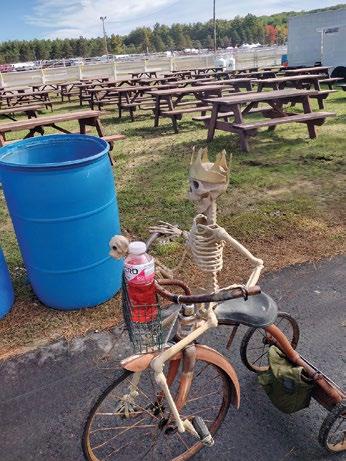

ing much progress. Finding nothing to do or a place to be in Bangor, it occurred to me that the famous Fryeburg Fair would be opening soon and I should go work it. And so I did. I worked for the popcorn and cotton candy wagon owned by the show office. I was given a bunkhouse to stay in and was treated very well by everyone on the show. And the reason for this article is
Since 2019, the Contributor street paper has had various options to support your personal vendor(s) of your community.
There have always been the rush times for customers who are willing to support the vendor and by a paper, but time does not allow it. Taking the paper shows an honorable interest in entrepreneurship on the behalf of the vendor. Our model of buying the newspaper wholesale and selling retail is what has been signed and agreed upon by each Contributor vendor.
Sometimes it’s easy to catch customers at the stop light or as customers are walking by. It’s easier, safer and of convenience to accept the paper and use other types of financial institutional payments — not just cash. Since each individual vendor is considered a micro-business, we all do things differently. But The Contributor stands firm with Square as being the digital payment method of the organization. You can find it by the QR code on the front of the paper. Once again remember
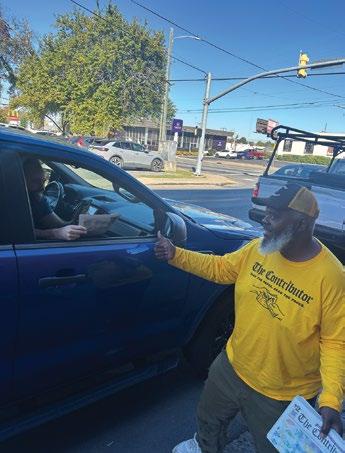
we Contributor vendors are out there for you and to keep simplicity in the forefront: roll-up, pick-up and pay later is the safest option.


it was the most amazing fair I had ever been to! You could plan a vacation around this fair. There is so much to see and do! This was the 175th year for the fair and the weather was perfect! I would also like to mention that if you are experiencing homelessness, the amusement business is a great way to get back on your feet, as well as make a living. There are 128 carnival
shows in the U.S. and if you google search for jobs it is best to get hired on in the early spring, February and March starting in Florida. Any fair is a good place to find work and most of the time it includes living quarters in the form of bunk houses. I got to see the Outlaws band live in front of stage the whole show, the draft horses compete, horse racing and on and on.
Ignite Nashville, the Contributor Vendors’ book of Tankas and other poetry, is lighting the literary and arts scene on fire.
Contributors were proud to present their first public poetry reading at Third Man Records on October 19th.
Excited audience members picked up poetry books and zines to take home with them.
“Some of our vendors are extremely creative people whose opportunities to make a statement in the world have been suppressed by the trauma of being unhoused or extremely poor,” said Lisa A., a contributor vendor.
Stagger Press, The Contributor and Third Man Records have been on a mission to introduce Contributor artists to the art scene in Nashville Tennessee with resounding success:
• Ignite Nashville created by the Contributors’ foremost poets.
• Public poetry reading at Third Man Records.
• 40 plus zines produced by UnZine Nashville just this year.
• Zine artists attended Vanderbilt Comicon and two art crawls at The Packing Plant, to a warm reception.
• Nashville Scene award for best nonprofit arts project.
• A coveted Metro arts Grant in September 2025.
• Gallery opening at The Arcade (unit number 56 upstairs) from November 8th through December 31st.
We have become an arts hub for those who have been given bread but deprived of roses. Our quality of life has risen exponentially as we interact with the community in new ways.
To visit our artists in The Arcade this season, check on Instagram (@thecontributor) for available appointments or open house dates.
FreepressGma will definitely be there!
Looming federal funding cuts to permanent housing programs could end housing assistance for tens of thousands of people nationwide, including some Nashvillians.
National advocacy organizations including the National Alliance to End Homelessness and CSH (formerly Corporation for Supportive Housing) are urging individuals and local groups to call on representatives in Congress and on the federal administration to continue funding for permanent supportive housing.
The news broke on Sept. 29, when POLITICO, a national news outlet, reported that, “more than half of the 2026 funding for the Department of Housing and Urban Development’s homelessness program designated for permanent housing projects will be cut and moved to transitional housing assistance with some work or service requirements, according to three HUD employees and a person with inside knowledge of the Continuum of Care program as well as internal HUD documents obtained by POLITICO confirming the cuts.”
“The funding cuts could put more than 170,000 people at risk of experiencing homelessness, according to the internal documentation and the people,” the POLITICO article further states.
The cuts refer to the Continuum of Care (CoC) program, a $3.6-billion federal funding source. The CoC program is HUD’s main competitive funding source to address homelessness with about 80-90 percent of the allocations going toward existing permanent housing and supportive services for people with disabilities.
According to POLITICO, the policy change would only allow 30 percent of the available CoC program funds to be used for permanent housing in some capacity. POLITICO also writes that currently about 87 percent of the $3.6 billion support permanent housing programs.
Nashville-area nonprofits and government agencies currently receive $11.38 million in total CoC grants. Of the $11.38 million, about $10.3 million is dedicated to permanent housing. In other words, about 90 percent of our community’s total CoC funding goes toward assisting people experiencing homelessness with housing. This includes programs that offer permanent supportive housing or rapid rehousing or a
BY JUDITH TACKETT
The term CoC is used to describe a geographically defined area in which stakeholders come together to build a system that effectively addresses homelessness. It gets confusing because there is also federal funding available that a CoC can apply for. In essence, the CoC program refers to federal funding that is allocated in an annual competition and managed by the U.S. Department of Housing and Urban Development (HUD). HUD enters contracts directly with awarded agencies that applied for funding through that annual competition, which is submitted as a combined CoC application by the stakeholders in that geographic area.
Last year, the CoC competition shifted from a one-year process to a two-year allocation — a move that the Trump Administration announced it would reverse. CoC stakeholders have been anticipating HUD directives to enter a new application process in 2025. Due to the federal government shutdown, that process may be further delayed. No one knows what the full impact of all these proposed funding cuts, information leaks and government layoffs mean for homelessness just yet.
combination of transitional housing that leads to rapid rehousing. Households who are served in rapid rehousing and permanent supportive housing hold their own leases.
The difference between rapid rehousing and permanent supportive housing is that the former offers time-limited assistance until people get back on their feet and can take over the full rent on their lease.
Permanent supportive housing, however, is not time limited. Even with permanent supportive housing, people may exit programs on their own once they are able to increase their income and won’t rely on rental assistance. But there is no time limit, and most people remain reliant on permanent support due to their disabling conditions. Currently, Nashville spends about $5.5 million of its CoC funds on permanent supportive housing programs. That’s just under half of the local CoC funds.
CSH has released comprehensive guidance to local CoC’s to help understand what is go-
ing on. In it, they outlined the implications for HUD’s proposed 30-percent funding cap for permanent housing programs as follows (copied and pasted):
HUD’s proposal to limit permanent housing funding to 30 percent of CoC allocations, a sharp drop from the current 87 percent, would destabilize supportive housing across the country.
This change threatens the financial backbone of supportive housing projects, which often rely on CoC-backed rental assistance committed years in advance.
Developers may cancel future projects, and landlords may be less willing to lease units to people with complex needs, shrinking the already limited supply of affordable housing.
In addition to this terrifying news that would undoubtedly increase homelessness nationwide, the Trump Administration proposes to slash the CoC program from the $3.6 billion to around $1.1 billion in the new budget year.
It is unclear what all this means. But one
opportunity our local CoC has is to examine how Metro’s increased budget allocation (city dollars that are not controlled by the federal government) is dedicated fully to permanent housing to off-set some of these federal cuts. The Mayor’s Office and Metro Council increased the budget to the Office of Homeless Services (OHS) by about $5 million to roughly $11 million for FY2026, which is the current fiscal year.
That means that with some strategic thinking and alignment with community providers, the city could help lead the charge in minimizing damage. Unfortunately, and unlike other cities and other local CoC’s, OHS has not sent out communication to CoC stakeholders about this federal threat yet (as of this writing and two weeks after the POLITICO article was published). Our local community elected OHS to serve as the CoC Lead agency for Nashville-Davidson County, and I am sure they are monitoring the situation.
If we look for answers to what we can do right now, we must turn to national organizations. CSH (csh.org) has released an Advocacy Activation Guide and sent it directly to local CoC lead agencies, coalitions, and other groups to elevate the issue with their congressional representatives. The National Alliance to End Homelessness is also sharing new information from the federal government level as soon as they get hold of it (endhomelessness.org). What you can do is call your representative, regardless of party affiliation, and make it clear that while we realize that the proposed changes to the CoC funding are driven by the Administration rather than Congress, they can insist on congressional oversight. Ask them to take action and influence the administration to revise or withdraw their proposals that would result in Nashvillians losing their housing and fewer people experiencing homelessness to access housing in the near future. If we truly want to reduce homelessness in this city and in this nation, action is required now.
Judith Tackett is a longtime homelessness expert and advocate for housing-focused, person-centered solutions. Opinions in this column are her own.
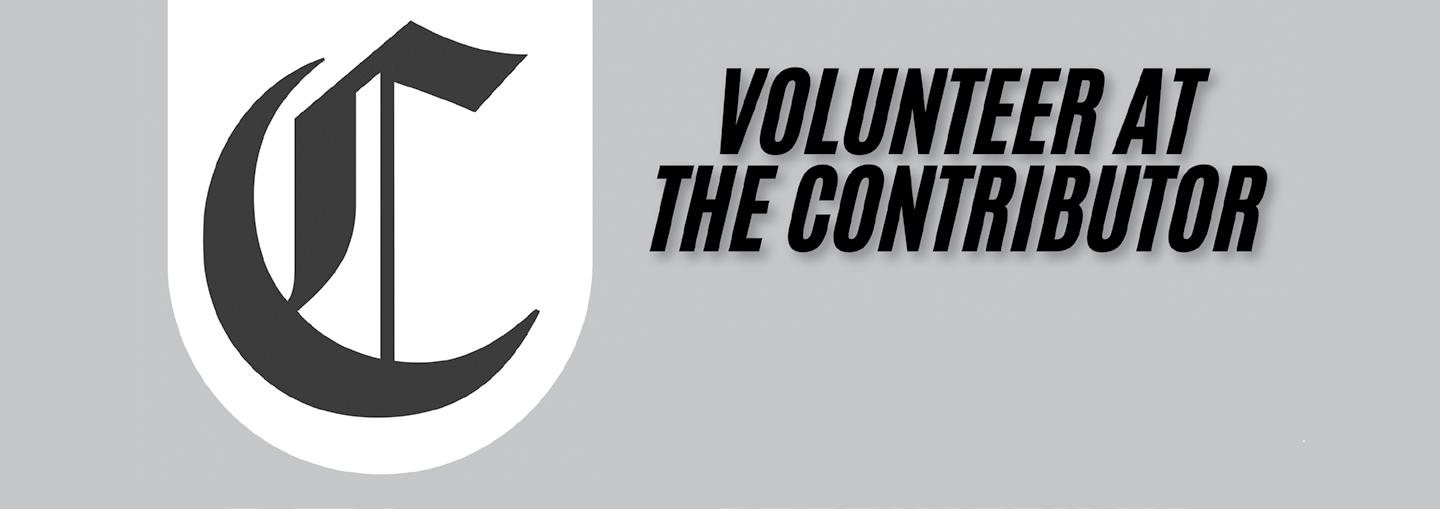
The Contributor is looking for regular volunteers in our vendor sales office from 10 a.m. - 3 p.m., Monday - Friday. Email info@thecontributor.org to apply!
There were a lot of movies I wasn’t allowed to watch when I was a kid. My friends would come to school quoting lines from the latest slasher-flick that they saw on late-night cable. “How sweet! Fresh meat!” I would nod and laugh and pretend I knew what they were talking about. Then I’d go home and watch more Scooby Doo. But now that we’re all grown up, Libra, we’re allowed to watch whatever we want! It’s pretty disorienting. There may be some limitations you’re holding yourself to that you don’t need anymore, Libra. Maybe it’s a good day to try something you’ve been afraid of. Personally, I’m gonna go watch all the Nightmare on Elm Street movies. Maybe I’ll call my mom first, just to make sure it’s really ok.
Wes Craven’s seminal work, A Nightmare on Elm Street, is an exploration of humanity’s relationship to fear. Are we nothing more than soft, slashable flesh – as vulnerable in our waking life as in our dreams? Or are we capable of overcoming the terrors that stalk us? Can we take the power away from the ever-pursuing dread simply by turning away from it? You’ve been losing sleep, Scorpio, trying to fight the anxieties of daily life and to dodge nightmares you feel you can’t control. But is it possible those forces only have as much influence over you as the attention you give them? Take a walk or even a nap. Maybe go jump-rope with those kids down the street.
My therapist says I need to take steps to reclaim my attention span. Ok, I don’t really have a therapist, but this book I’m reading says I need to reclaim my attention span. Alright, Sagittarius, you got me. It was a podcast. I mean a clip from a podcast. Ok, yes, I guess I scrolled past a post with a headline about a clip from a podcast that says I need to reclaim my attention span. Anyway, Sagittarius, if you’ve got a few minutes today, try reading something longer than a horoscope. Or maybe even have a conversation without looking at your phone. My therapist says it’s a skill you can build.
The uncarved pumpkin on my front porch already has a soft-spot on top. Last year’s porch pumpkin made it nearly six months before it gave out, but this one’s already on its way to the compost pile. You never really know what’s gonna last, Capricorn. Sometimes the things you think will be around forever can’t even make it through the fall. Some things stay with you much longer than you wished. Part of your work this week is rolling with that unknowable constant. You can’t control what stays and what goes. But you can learn a lot by watching a pumpkin decompose.

A Nightmare on Elm Street II: Freddy’s Revenge is a meditation on the damage we can do when we try to manage our secrets instead of getting them out in the open and taking responsibility for them. I guess most of us aren’t secretly possessed by an unstoppable, beclawed, murderous vengeance spirit, but most of us do have some area in our lives that we’re trying to manage instead of share. What’s the part of you you’re afraid to talk about, Aquarius? You don’t have to tell me, but it seems like a good day to tell somebody. Before things get profoundly out of hand at the pool-party.
I had to get up early this morning for work. Sandra called out sick, so I picked up an extra morning shift at the Wandering Hills Super-Video and Tan. I stepped out the front door and was immediately overwhelmed by the moonless predawn sky. The stars were so clear and the universe — it’s just so vast. I’ve seldom been as aware that I’m standing on a planet. With my feet on the surface and my head reaching into the atmosphere. And at first I felt very small and insignificant and then I felt that reverse. Because what could be more important than to stand in the dark and notice where you are? And I thought of you, Pisces. You’re right where you’re supposed to be. Stand up and look around. It’s stunning.
Yes, Aries, of course I remembered to pick up the coffee on the way over. This one’s mine and here’s your decaf. Or, wait. Maybe this one’s your decaf and mine’s the one in my… left hand? Sorry. Give me a second. I had this figured out in the car, but then which one did I pick up first? Ok, I’m 80% sure that this one is mine and this one… is the decaf. Tell you what, Aries, I’ll drink both of these on my way to get you another decaf. We can’t be too careful. Don’t sacrifice needs for somebody else’s disorganization.
Slasher movies are often warnings about the hubris of isolation and fate’s cruel volatility. But A Nightmare on Elm Street III: Dream Warriors tells the story of the power of friendship and communication to overcome even the most powerful rivals. If you’re having trouble building a team, Taurus, remember that you’ve got me. Aquarius and Scorpio said they’d help out too just as soon as their TV show is over. I know you’ve got a lot to handle right now, but grab some holy water and a shovel and I think we can get this knocked out before morning. Sometimes it just takes the right combination of people and a willingness to stay awake.
Picture a mango, Gemini. Can you see it? Or maybe you’re the one out of five people who don’t really visualize images in their minds. If that’s the case, Gemini, just hold the idea of mango-ness in your head. Can you imagine the feel of mango skin? Can you smell it? Imagine the taste and texture. The mind is an amazing place to have a mango, Gemini, but it still can’t feed you. If you want the mango of your imagination to become the fuel for future thoughts, you’re going to have to go get one. You’ve got the goal. Now take the steps to get there.
Is it usually so warm this time of year, Cancer? I feel like when I was a kid we were deep into jacket weather by now. I’m sure it’s coming. The trees think it is. Every time the warm breeze blows, an army of crunchy brown leaves comes marching down my street. I guess we and the trees can prepare for things to be how they’ve always been while we keep our eyes open to changes. I’m buying some more shorts on clearance this fall. Worst case scenario I’ll have a wider assortment to choose from in the spring. What are you doing to stay ready?
In A Nightmare on Elm Street IV: The Dream Master we follow a seemingly powerless and confused protagonist as she overcomes her self-doubt and activates her own potential. It made me think of you, Leo, because you’ve done a lot of that already. You’re starting to understand just how capable you are. But that doesn’t mean you’re destined to be the lonely final girl. Your power will resonate even more if you use it to bring us with you. When you look in the mirror, I hope you know you’re not alone. We’ve got your back. Just remember what you’ve learned and we might all make it to the next sequel.
Everybody wants to start a reformation lately, Virgo. They say we need a whole new way of thinking about the world. And everybody trying to start a reformation says they know that new right way of thinking. I wish them well, I really do. They might just save us all. But you and I, Virgo, might be better off starting a renaissance. Let’s paint the ceilings and chisel the rocks into something beautiful. Let’s turn reality into art and then art back into reality. Let’s discover what’s good in the world and try to figure out why. While the reformation is out there trying to get televised, you and I will be looking at the sky, counting Jupiter’s moons. Find the beauty today or make it.
Mr. Mysterio is not a licensed astrologer, a trained dream master, or an authentic fuzzy striped sweater. If you die reading your Hoboscope, you die in real life!* Want more? Visit mrmysterio.com Or just give him a call at 707-VHS-TAN1. (*We don’t think this has ever happened.)
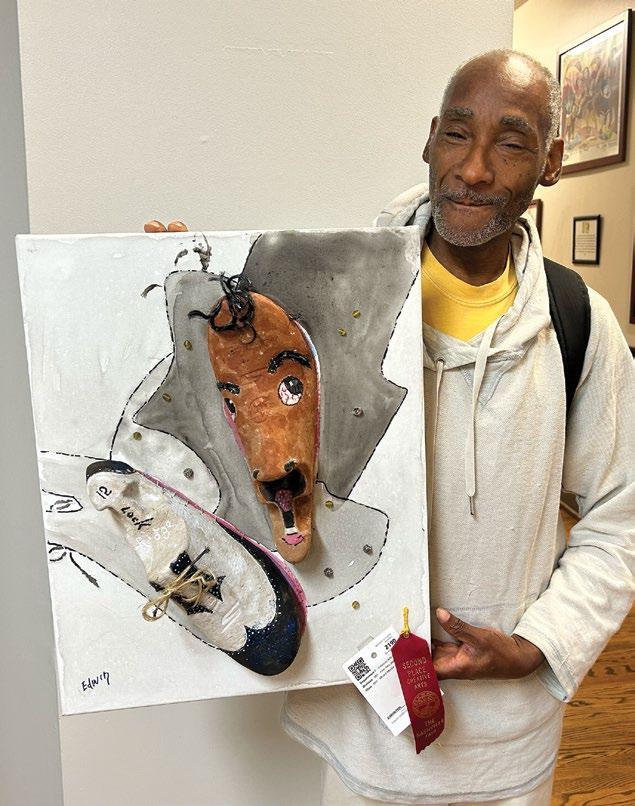
Created by Mccollonough Ceili

Ask a grown up or older sibling to cut out zigzags across the bottom of a toilet paper roll. Next, paint the roll white. We also like to use a thin coat of glow-in-the-dark paint once the white paint is dry. Next, create any face you would like. You can copy this example or create your own!
SUBMITTED BY HOWARD P., CONTRIBUTOR VENDOR
• Why, why, why do we press harder on the remote control when we know the batteries are getting weak?
• Why do banks charge a fee due to insufficient funds; when they already know you’re broke?
• Why is it that when someone tells you that there are one billion stars in the universe you believe them, but if they tell you there is wet paint you have to touch it to check?
• Why doesn’t Tarzan have a beard?
• Why does Superman stop bullets with his chest, but ducks when you throw a revolver at him?
• If people evolved from apes, why are there still apes?
• Why is it that, no matter what color bubble bath you use, the bubbles are always white?
• Is there ever a day that mattresses are not on sale?
• Why do people constantly return to the refrigerator with hopes that something new to eat will have materialized?
• Why do people run over a string a dozen times with their vacuum cleaner, then reach down, pick it up, examine it and then put it down to give the vacuum one more chance?
• How do those dead bugs get into the enclosed light fixtures?
• Why is it that whenever you attempt to catch something that’s falling off the table you always manage to knock something else over?
• Why, in winter, do we try to keep the house as warm as it was in summer when we complained about the heat?
• REMEMBER, A day without a smile is like a day without sunshine! And a day without sunshine is, like night!!!!

“Silence is one of the hardest arguments to refute.” – Josh Billings
Ancient symbols mixed with new create a fun Halloween hue. How many of these images can you find? P.S. Did you know that it was the Irish who brought Halloween to America?


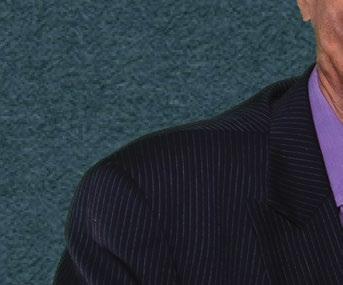



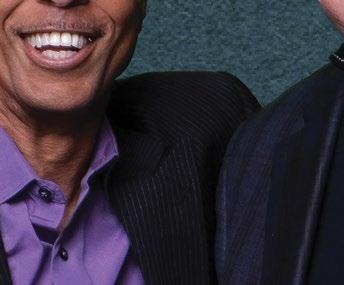

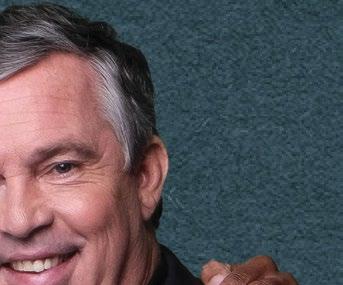










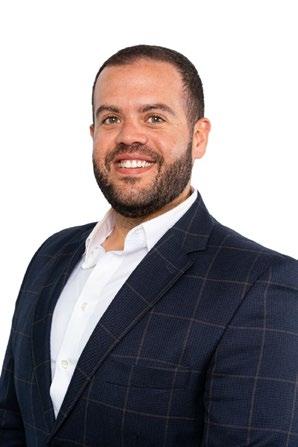





Identical twins Danny and Michael Philippou started their filmmaking careers creating wrestling videos in their Adelaide, Australia, backyard when they were 11 years old. The Philippous’ horror-comedy shorts on their RackaRacka YouTube channel racked up a billion views before the duo made their feature debut with Talk to Me in 2023. Talk to Me featured a great mix of fun and fright, supernatural chills and unique effects, and the duo’s newest release exceeds expectations. Like Talk to Me , Bring Her Back also features afterlife themes, but its production, writing and performances represent a full grim and gory step forward for the directing duo.
Seventeen-year-old Andy (Billy Barratt) and his younger, visually impaired stepsister Piper (Sora Wong) discover their father dead in the shower. Their lives are thrown into chaos as the minors find themselves at the mercy of the state. Andy has a protective relationship with Piper and plans to apply for legal custody once he turns 18. But when their caseworker Wendy (Sally-Anne Upton) places the pair with
BY JOE NOLAN, FILM CRITIC
their new foster mother, she has plans of her own.
Laura (Sally Hawkins), a former counselor who recently lost her own daughter, operates a foster home in the countryside. Her isolated property is quiet and comforting at first, but Andy and Piper begin to sense that something is wrong about their new living situation. Laura establishes an immediate, intense, almost obsessive interest in Piper, but has trouble remembering Andy’s name and seems to purposely cut him out of their first family selfie. Andy and Piper share Laura’s attention with Oliver (Jonah Wren Phillips), a mute boy also living in Laura’s care. Oliver exhibits deeply disturbing behavior — communicating only through his disturbing drawings and often seeming strangely detached from reality.
The writing (Danny Philippou and Bill Hinzman), casting and acting work so well together here that Bring Her Back sometimes feels like a grief-filled family drama before the next supernatural occurrence or strange discovery reminds viewers they’re treading water in the deep
end of a sometimes very disturbing horror film. Sally Hawkins’ Laura is especially mercurial and menacing, lulling Piper and gaslighting Andy while slowly revealing just how far she’ll go to rebuild the loving connections she’s lost.
Andy starts to investigate the bizarre occurrences around the property, but soon begins experiencing troubling symptoms like bed-wetting and startling hallucinations. Laura’s behavior becomes unpredictable and erratic, and Oliver’s presence seems increasingly menacing. When Andy discovers secrets about Oliver’s identity, the pieces of a horrifying puzzle snap coldly into place.
The Philippous’ pacing is commendable here. Bring Her Back is a quiet film that explores solemn themes, but it steadily reveals its mysteries until the tiniest, oddest details give way to full-screen revelations of something wicked happening at the woodsy homestead. Talk to Me was serious and scary, but some of its fun was in its feel as a teen terror flick. Bring Her Back is a mature adult film subjectively and formally. Cinematographer Aaron McLisky’s
lensing is saturated and brooding — it’s a perfect match for the foggy woods in the soggy countryside. Geoff Lamb edited the film alongside the directors, and their poetic cutting gives the proceedings a somnambulent, surreal sensibility.
Andy races against time to protect Piper from Laura and an occult ritual that marries unbearable grief with Satanic forces. But Bring Her Back works because for all of its demonic energies, magical circles, wicked foster parents, vulnerable orphans and spooky woods at night, it’s a movie about parents losing their children, children losing their parents, abusive homes, trauma, disability and all the other real life pains that can come from the families we’re born into, and the ones we find when the lights go out.
Bring Her Back is streaming on HBO MAX
Joe Nolan is a critic, columnist and performing singer/songwriter based in East Nashville. Find out more about his projects at www.joenolan.com.
